
Бесплатный фрагмент - Budapest — Bratislava
Hungary and Slovakia. 2 cities in 1 weekend
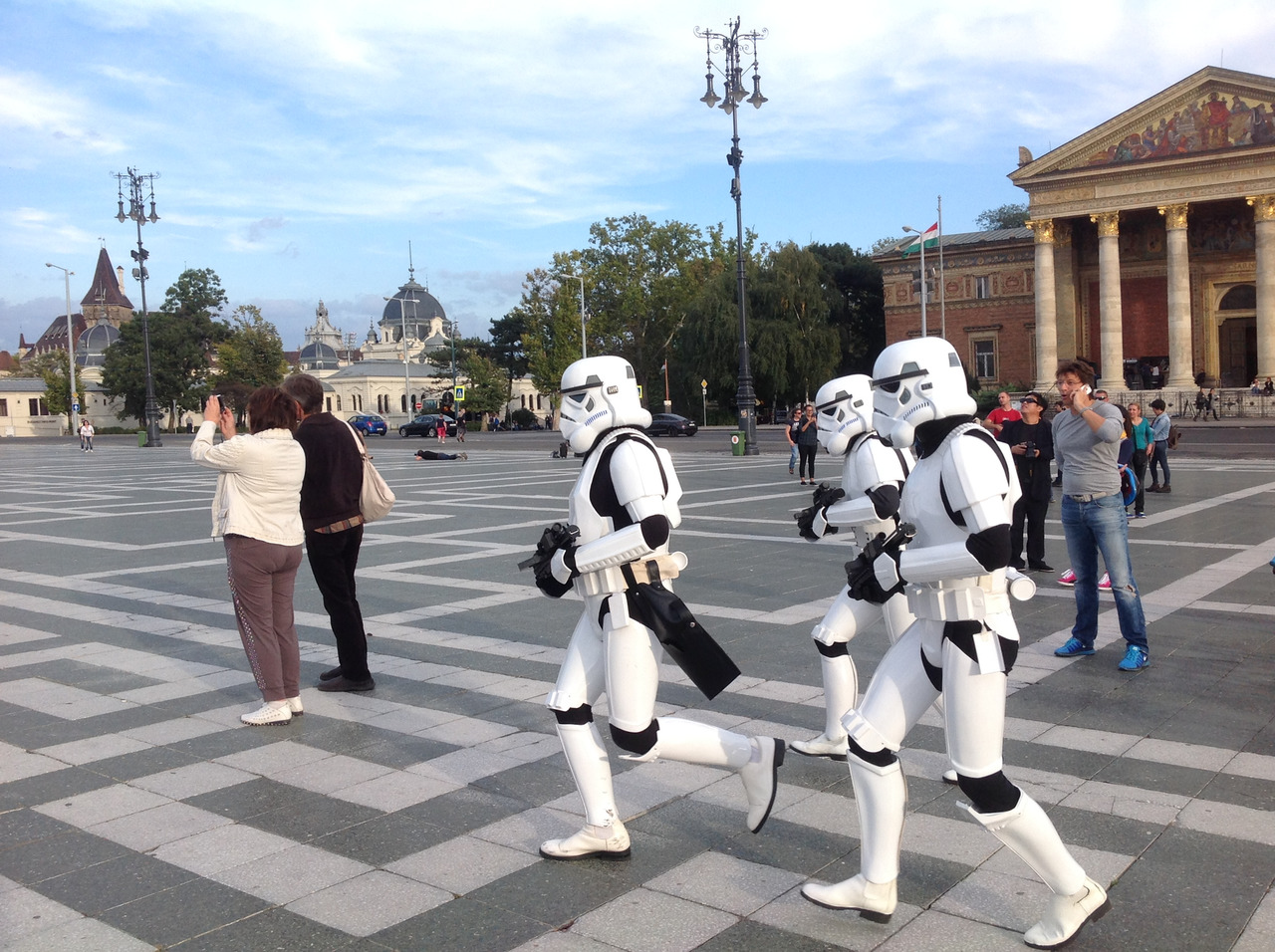
Budapest-Bratislava
Two cities in one Weekend
Introduction
A trip to two eastern European capitals — Budapest and Bratislava, is, perhaps, one of the most memorable trips. The desire to go to Slovakia and Hungary for many years did not give me a generation, and the key moment came when one day I found a budget variant of flight — airline tickets through Wizz to Budapest and back for only 11 thousand rubles.
Yes, the price for a lowcoster is not as low as it is, but given that it is often difficult in Hungary to buy a ticket for 15,000 к roubles, I was pleased with the purchase and booked an inexpensive hostel in the center of Budapest via Hostels.com.
After that, I checked the possible options for moving from Budapest to Bratislava and back for one day, and it turned out that the most inexpensive and convenient option is a train that travels just 2.5 hours, and costs some 16 euros round-trip. But I did not manage to buy it on the Internet, and I decided to do it at the ticket office at the station, thereby not having lost.
My trip took place on October 8—10, 2015. It should be noted, October is the ideal time to visit the countries of Eastern Europe, especially if you are lucky with the weather. When I was lucky with the weather, I can confidently recommend going to these dates for an unforgettable vacation.
Departure
Departure of my flight was planned at 10—05 am from Sheremetyevo airport. And then something interesting began!
When you fly the airline Wizz, be careful of their cunning rules. When I went to the front desk, I was asked for a boarding pass. By habit, I never print a boarding pass, even if I register in advance. Somehow I prefer not to bother. And then there is such a surprise — you need a ticket already printed, otherwise you need 2 600 rubles. In the same situation as I was the majority of passengers on my flight.
Not to pay this money there was no chance, there was not much time left before the flight. I already learned later that they had detained the plane for 2 hours. Scandal was also useless. And in general, my advice to all people whose rights at the airport are violated, not scandal at airports. The airline staff will call security, you will be late for the plane, and nothing good will end there. It is better to ask at once all the details, collect as much as possible all information about the violation of your rights, find out the names of the employees, and tell them about where all these materials will be sent, and what awaits unscrupulous carriers. There are, indeed, a lot of structures, where you can then turn to collect what is due.
But in my case it did not work, because I bought a ticket through an intermediary company — Aviakassa, which was supposed to warn me that if a passenger did not register in advance, he would pay a fine. So, Aviakassa worked very well — they registered me in advance for the flight and sent me a boarding pass with a window seat. Of course, the staff at the front desk knew this, but there was nothing to tell me, forcing me to pay money. I missed this letter with a boarding pass. I had to pay a large sum, but at the same time the place was not at the window.
You know, such events can often cloud all the mood before any trip. I think many will agree with me that this behavior of the airline is simply unacceptable.
In the waiting room, girls of the student sat next to me, and one of them called Mama on the phone and cried, saying that these two and a half thousand rubles paid by her were exactly half of what she took with them on the trip, and did not know how now to be.
In general, we put two to WIZZ on a ten-point scale!)
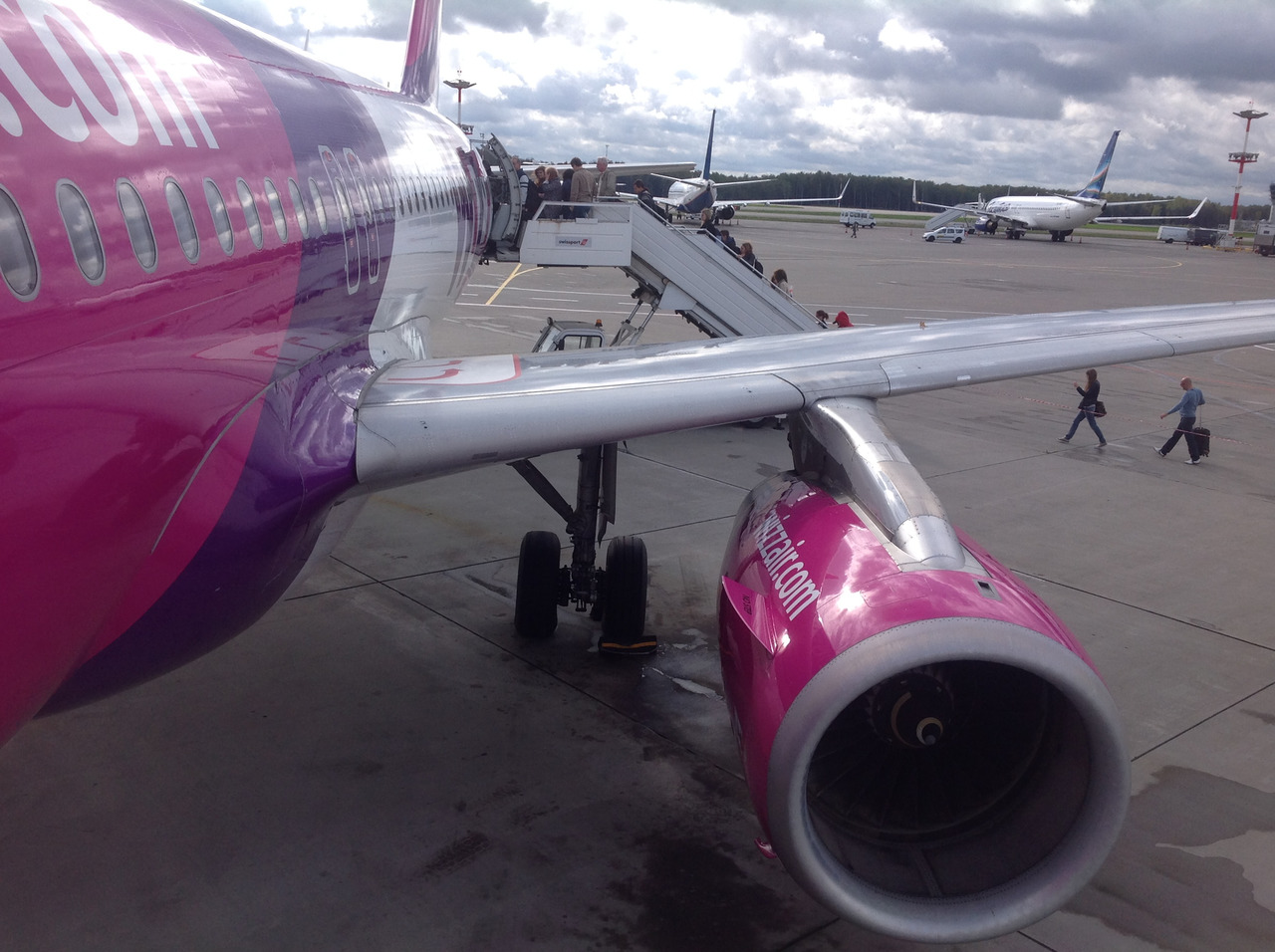
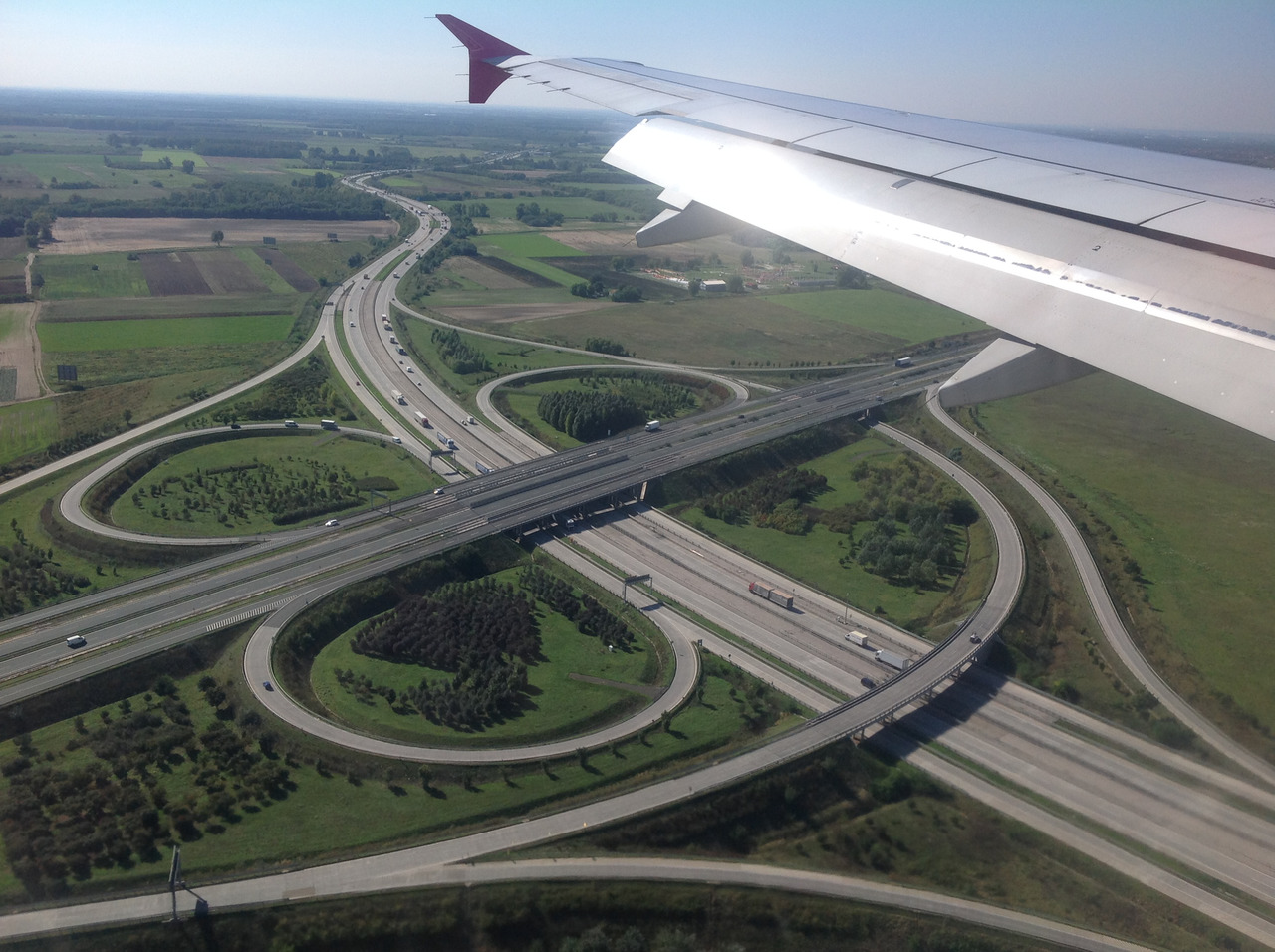
Part 1 Budapest
ARRIVAL
The first thing on arrival was to exchange a few euros for the forints to buy a bus ticket at number 200E and the subway. At the airport of Ferenc Liszt, the rate was rather profitable (as shown by comparison with exchange offices in the city).
The bus takes you to the final station of the Budapest subway — Kyobanya-Kishpesht.
It should be noted that there were a lot of passengers on the bus, almost all of them were carrying suitcases and bags, which means that there were very few places on the bus. We drove about half an hour.
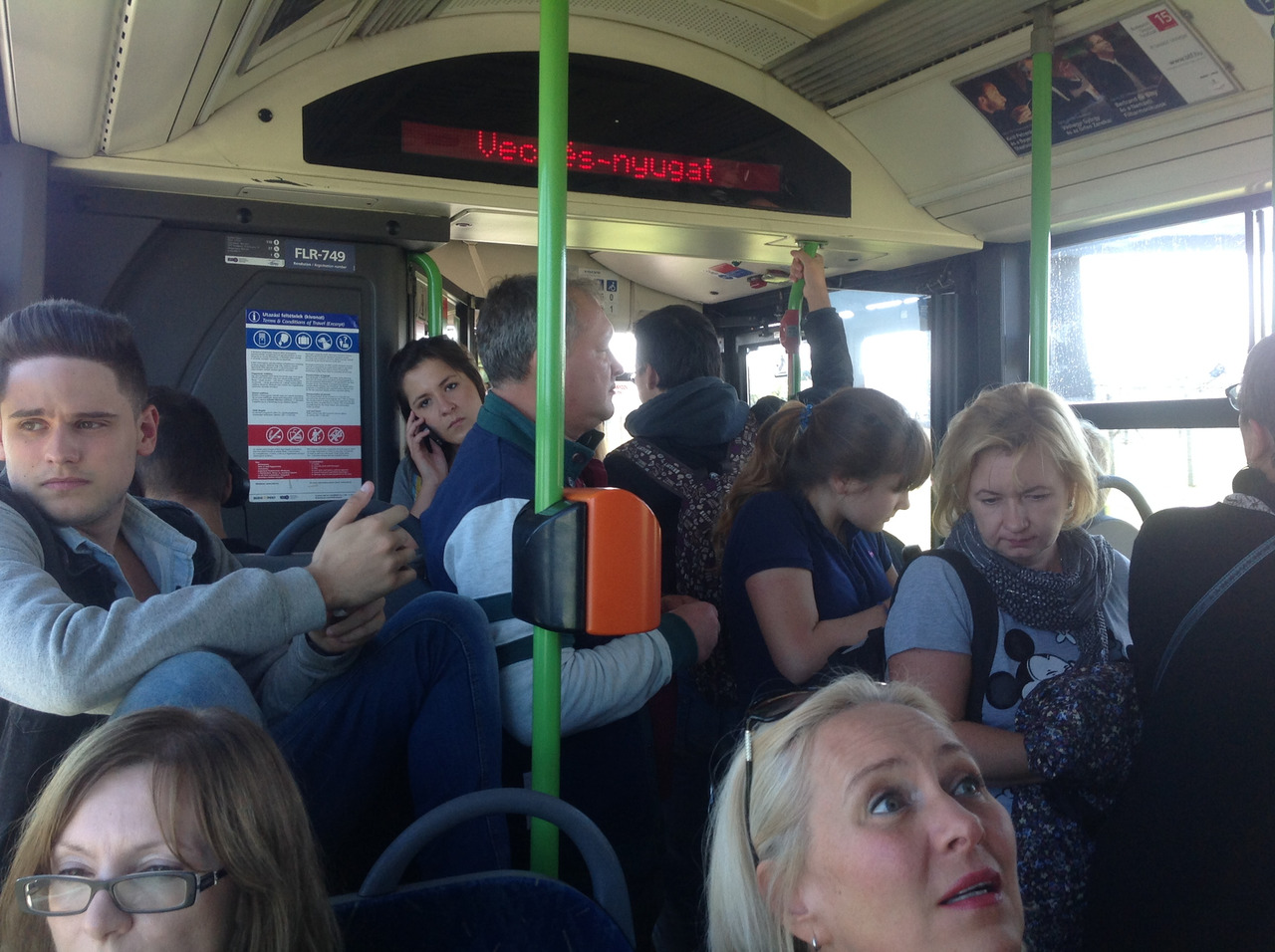
THE WAY TO METRO
From the final bus stop to the terminal metro station it was necessary to walk about 200 meters. I do not know with what it was connected, with a temporary repair or with a plan originally planned for such a route, but my first impression of Hungary fits into this distance.
Budapest Underground
The first sensation from the entrance to the metro of this European capital is “you got to Moscow”.
The idea of building a metro appeared here in 1870, and the first line was opened already in 1896, that is, 39 years earlier than the metro in Moscow appeared. Then it was the first subway on the continent.
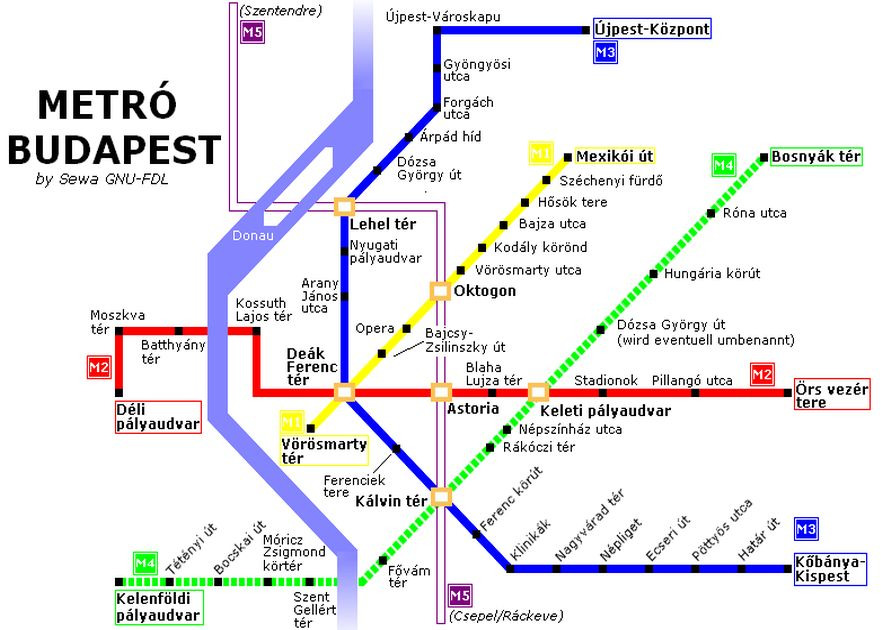
Source: http://think-differ.by/images/stuff/budapest_metro_map.jpg
Today the Budapest Metro iclude 4 lines and 52 stations, and the average passenger flow exceeds half of the city’s population.
What reminds in this Hungarian subway about Moscow is the rolling stock. Here, so-called letter cars of the type “Ev” are used. Today in Moscow you can see cars of this type, but a similar model of the “Hedgehog” on the Tagansko-Krasnopresnenskaya metro line. They are also called “Hedgehogs”.
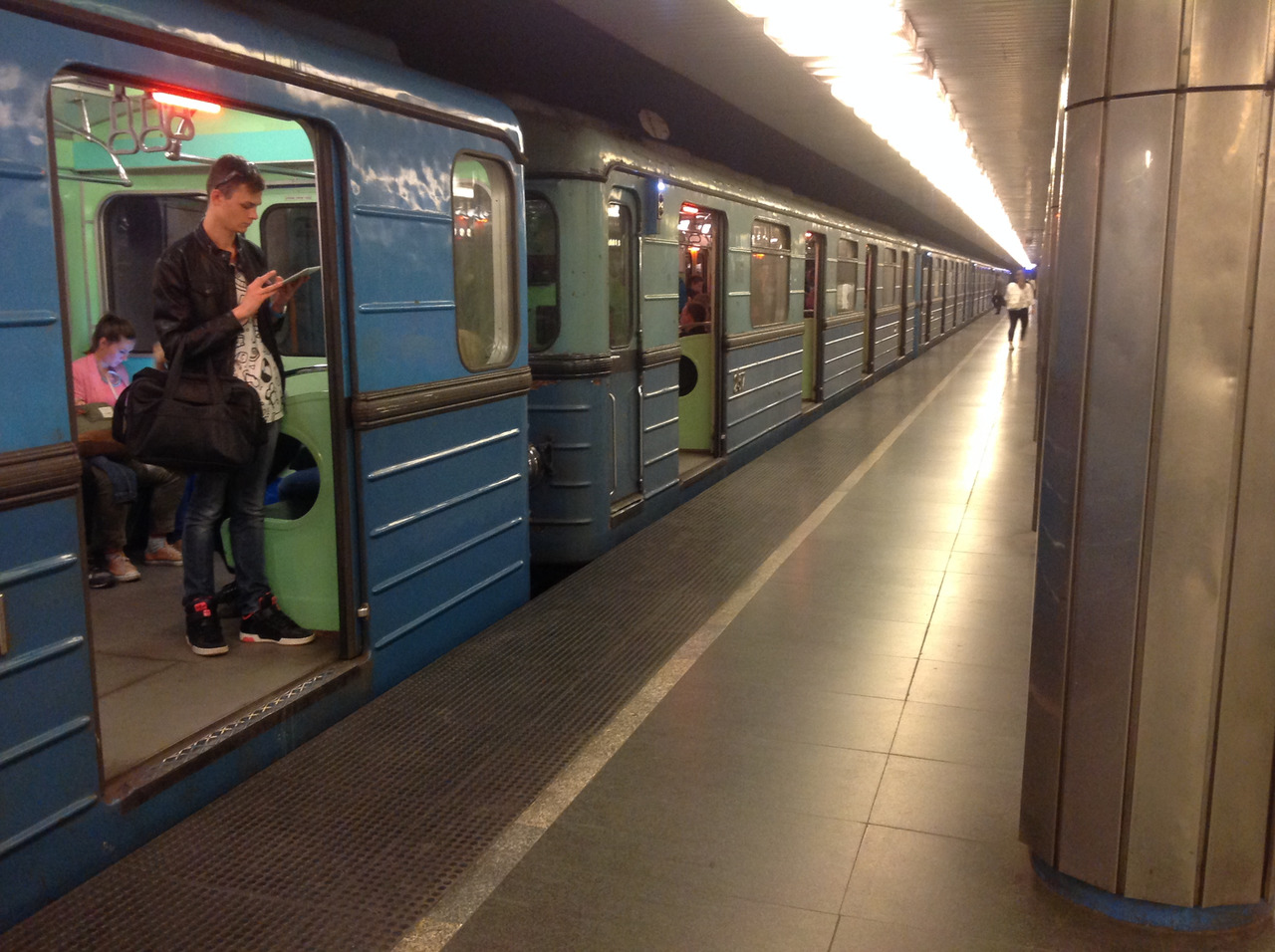
METRO STATIONS
Basically, as in most European pages, the metro stations in Budapest are the most ordinary. Somewhere tiled with some works of modern art, some elements of socialist constructivism, but mostly billboards decorating platforms, vans and vestibules.
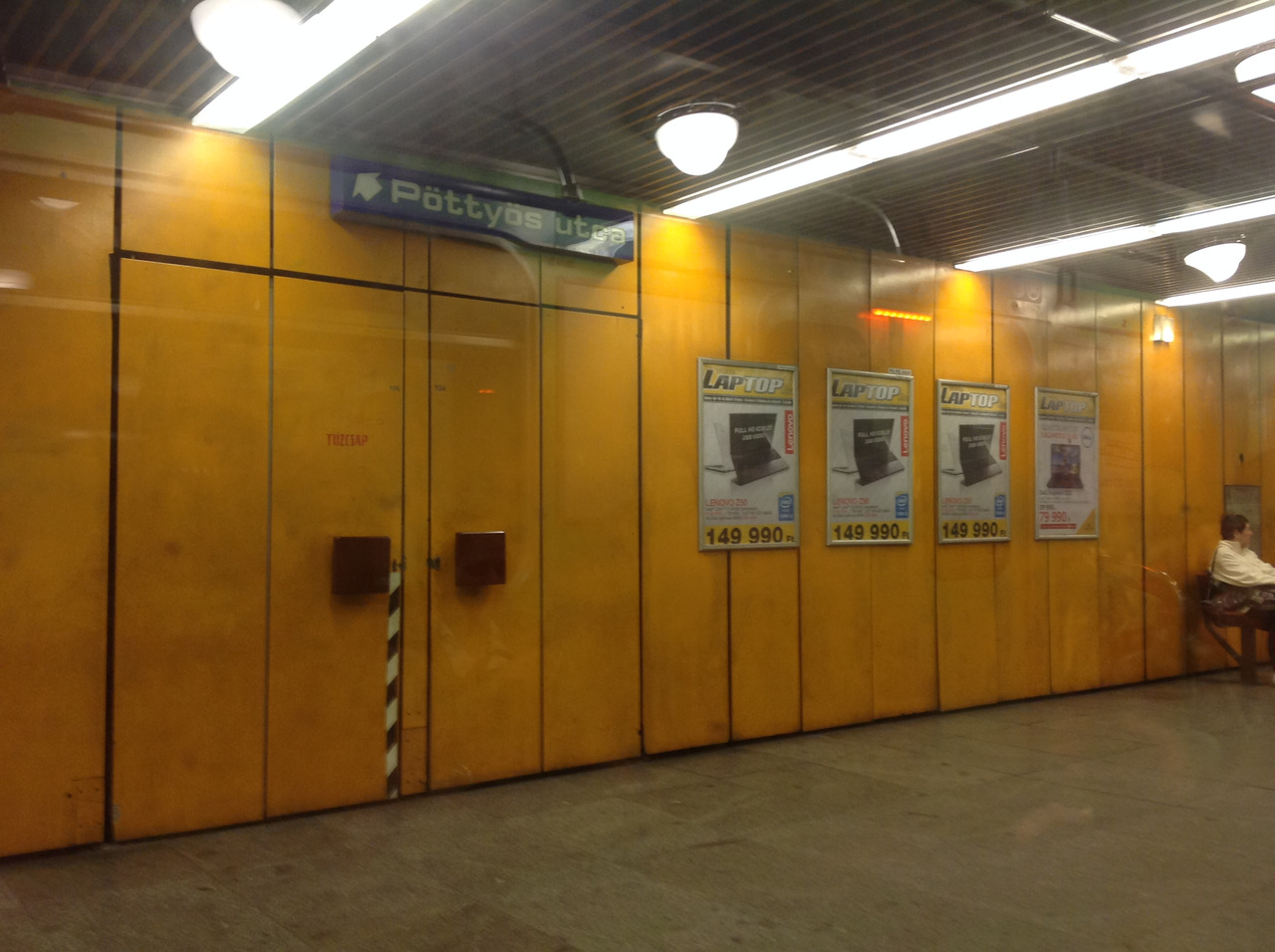
EXIT TO THE CITY
I left the metro station at the central station — at the intersection of three lines, at Deak Ferenc Ter.
The first impression is the noisy, talkative, classical capital of a European country. The lunch time of Friday promised to see all the city’s vanity and everyday life in all its diversity.
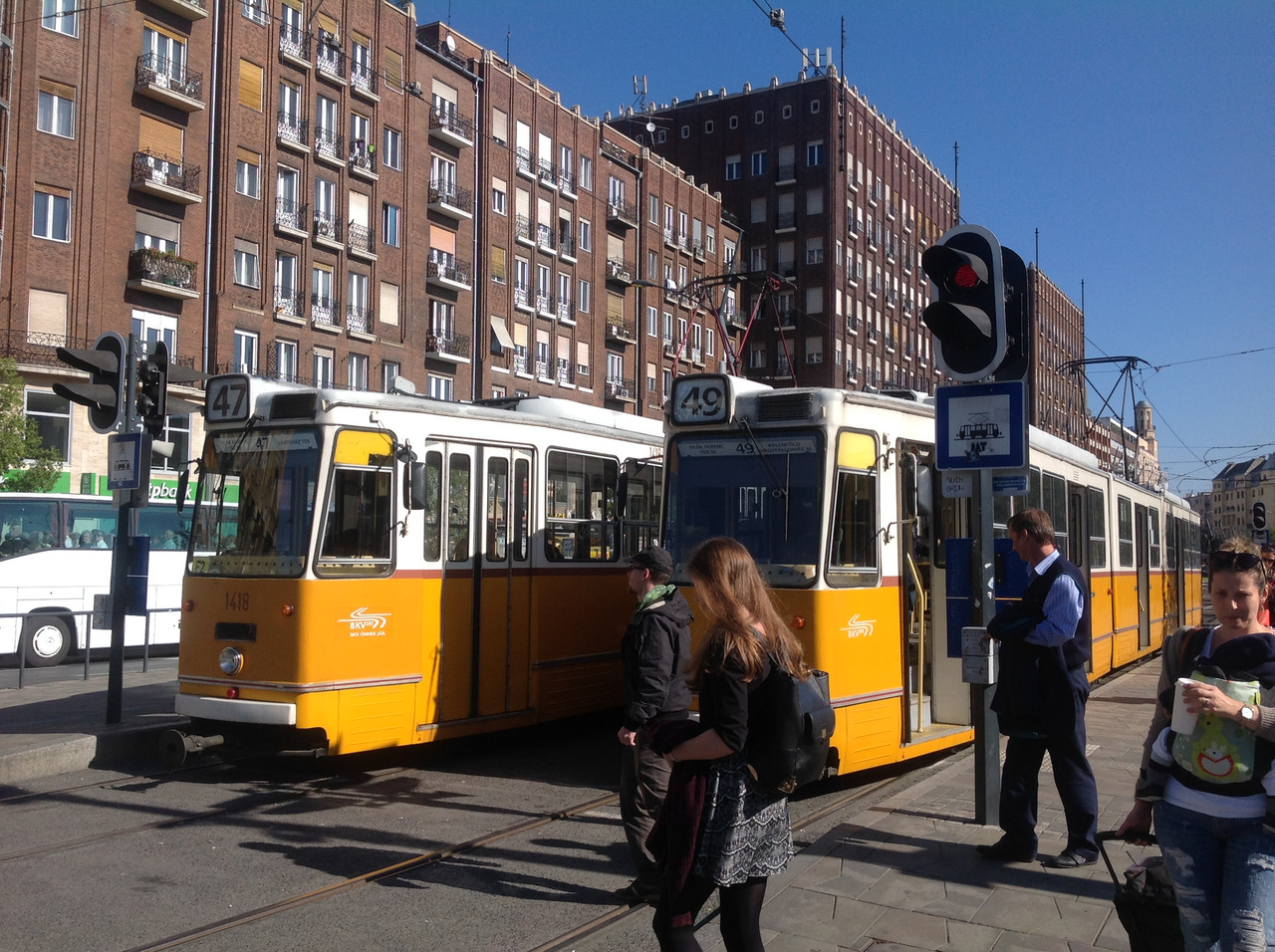
DEAK-FERENZ-TER
Ferenc Deak is a famous Hungarian political figure of the XIX century. He is called the founding father of the Austrian-Hungarian agreement of 1867.
Today, its name is one of the central squares of Budapest and the metro station.
It is here that I recommend finding a place to stay. I booked a hostel “Captain Budapest” in advance on the Hostels.com website, which offered at a very good price, only 10 euros per night, bed in a 10-bed room, and breakfast.
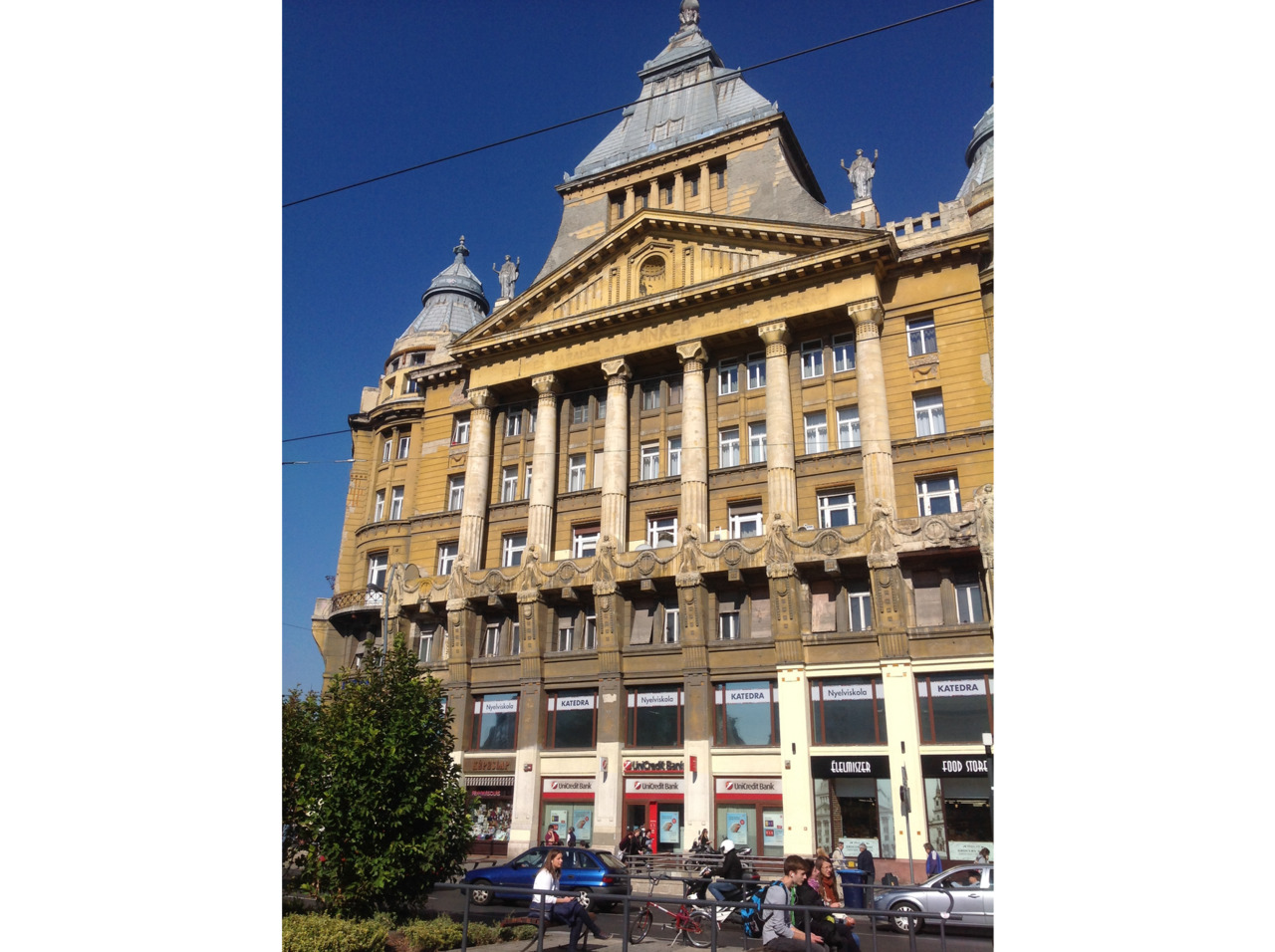
HOUSE WITH THE HOSTEL
The house where my hostel was located, I found right away. This is a large, historic building in classical style at Bajcsy-Zsilinszky út 3.
What immediately surprised, so it’s a courtyard-well with balconies-open galleries around the perimeter.
At the same time, the building was under reconstruction. The builders were already downstairs, they were pouring concrete into the arch. And at the top of the renovation has not yet been started — shabby walls, an old elevator — all this reminded of the Hungarian routine of the 1970s.
Behind the bars was the entrance to other rooms, which were also abandoned. Judging by the inscription that was created 50 years ago, it was also a door leading to some kind of baths.
And in general, the sensation of some abandoned hospital from the horror film.
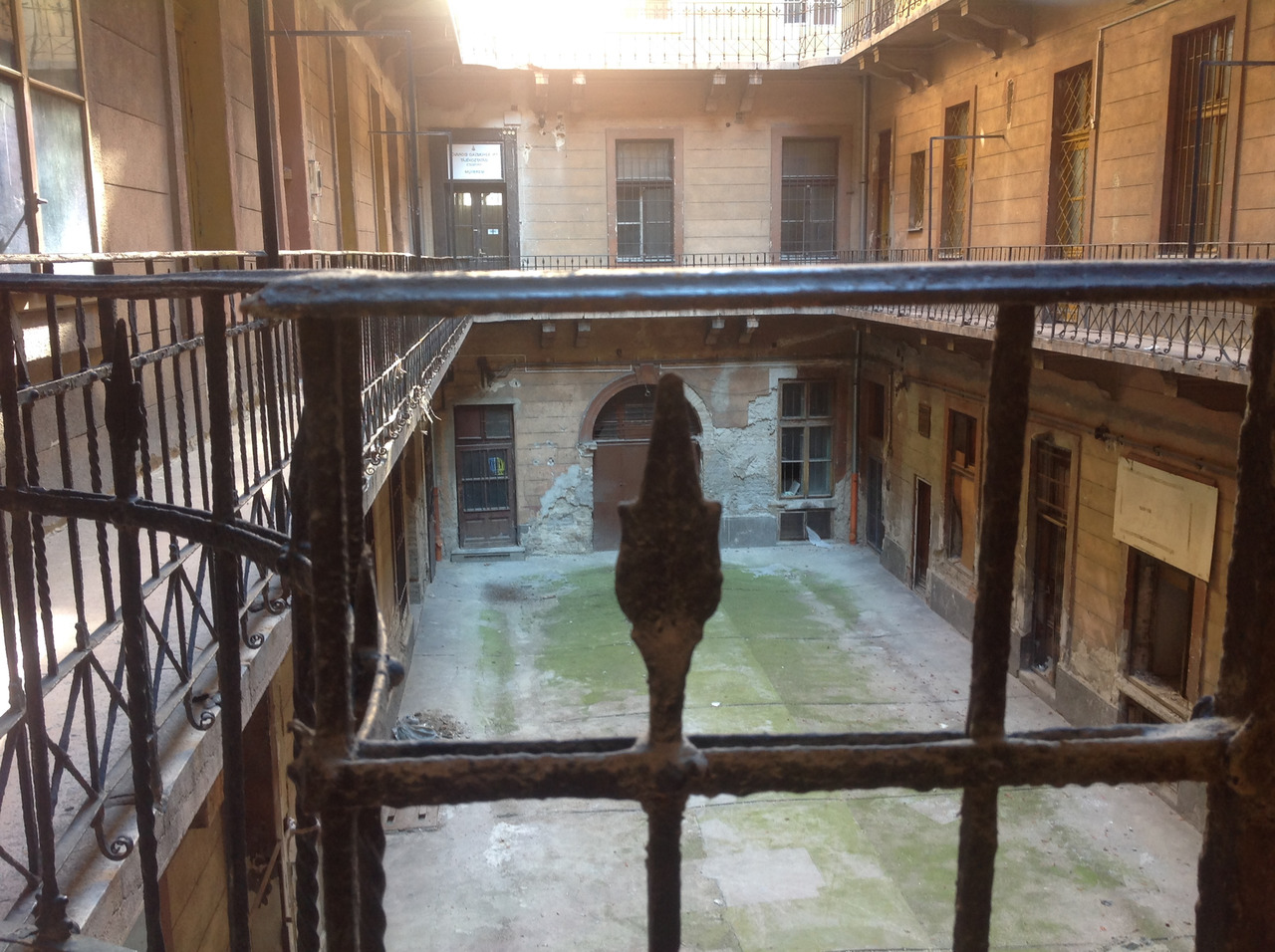
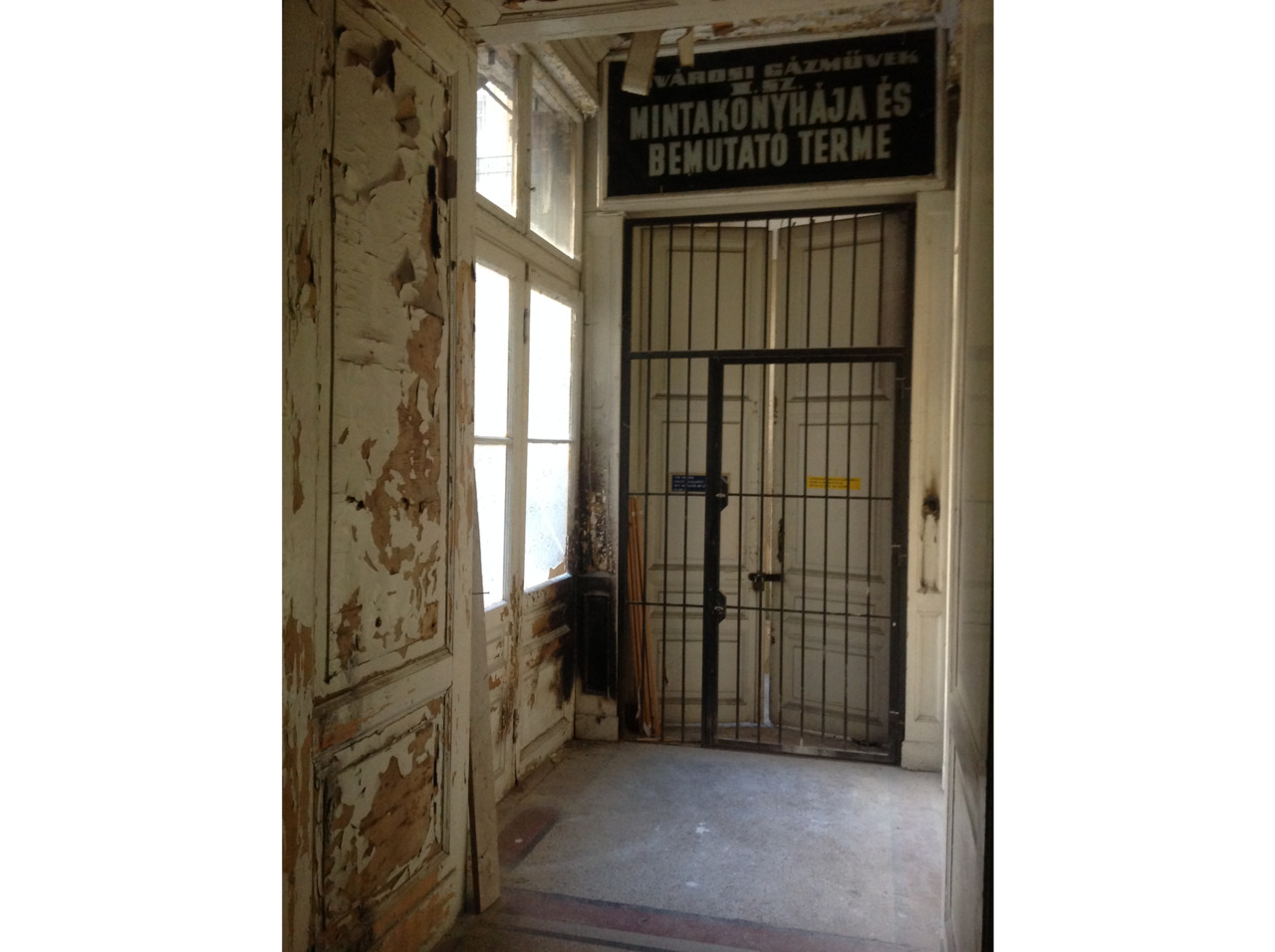
HOSTEL “CAPTAIN B”
But despite the devastation in the corridor, the hostel was new, renovated and very decent.
At the reception, I met a pretty nice girl with glasses, who agreed to settle me despite the lack of a local currency to pay for my stay, gave me a password from Wi-Fi and explained where the exchange office is located.
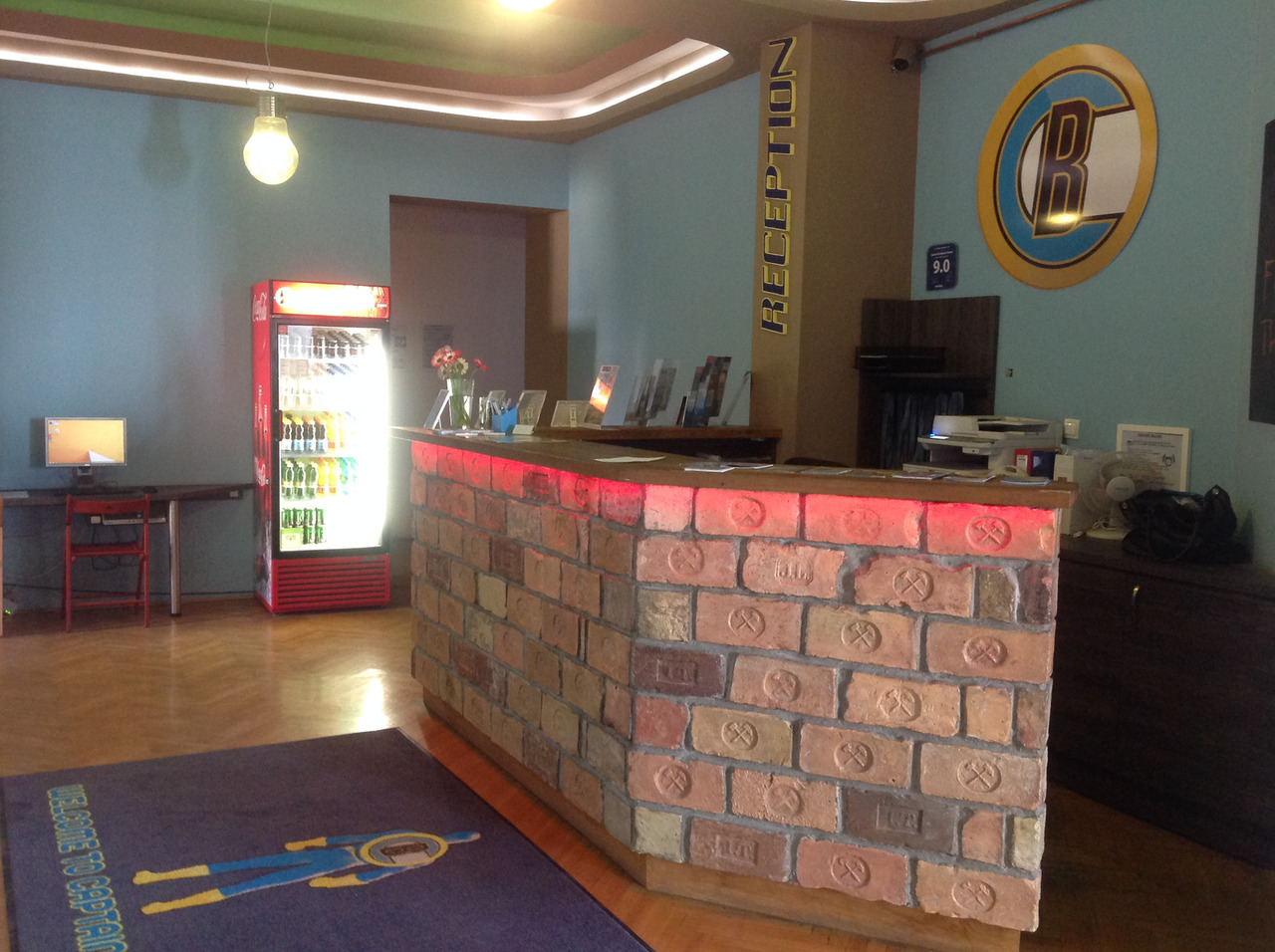
10-people MIX-RUM
Bed in a 10-bed room, designed for both boys and girls — a good option for a budget tourist.
All the beds were clean and there were no things on them, I could choose any one I liked. I prefer to sleep at the top)
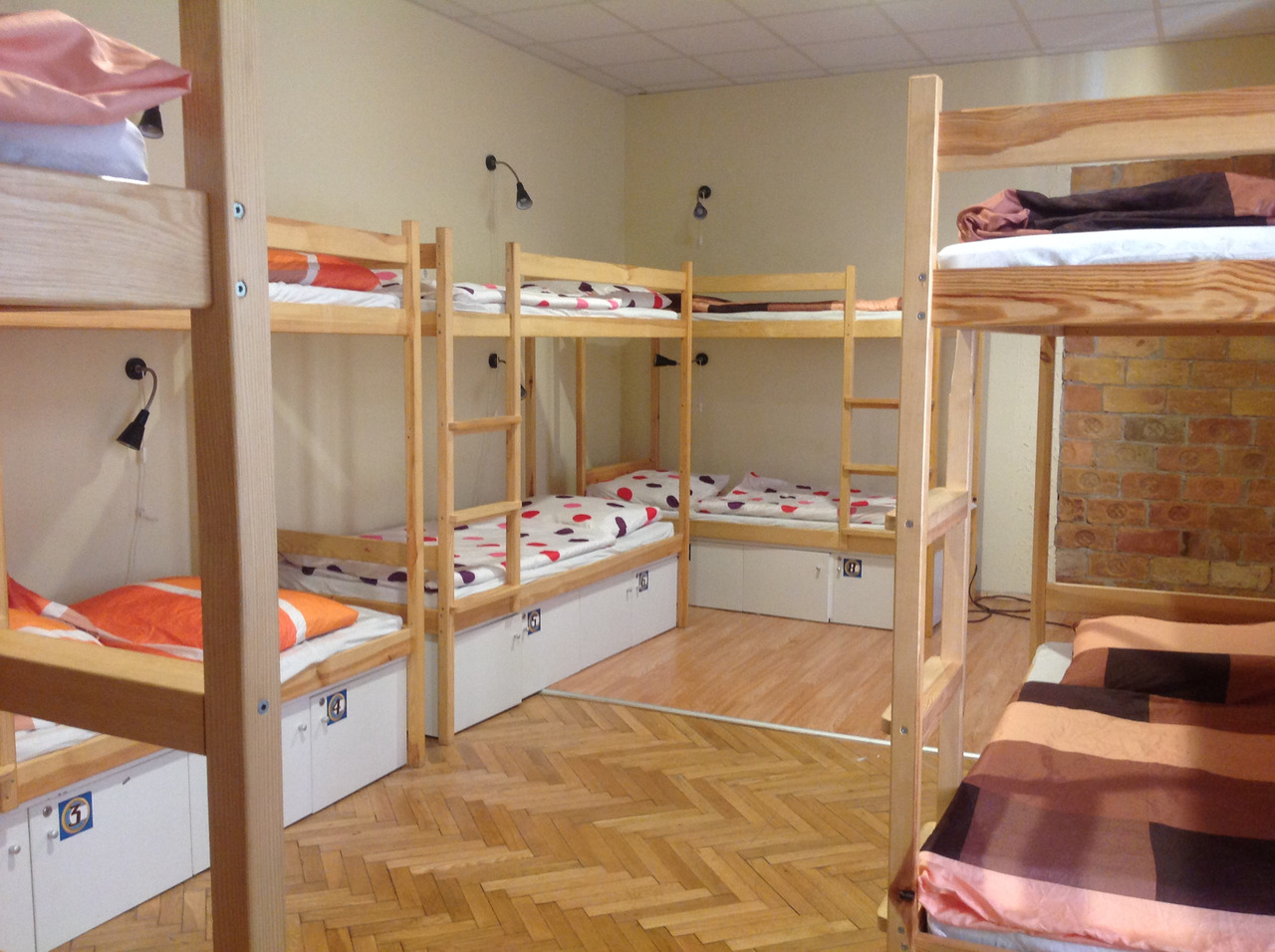
COMMON SPACES
Advertising to this hostel is useless. As it is written on google maps that it is closed forever. Yes, and in the services of hotel booking it is no longer there. It is unfortunate that such good and inexpensive hostels are closed. Look at the spacious living room.
Everywhere, the superman is depicted as a symbol of the hostel with the image on the shield of the letter “B”, meaning “Budapest”.

VIEW FROM THE BALCONY
From a small balcony opens a chic view of the avenue Bajcsy-Zsilinszky and all the city bustle that unfolded outside the window.
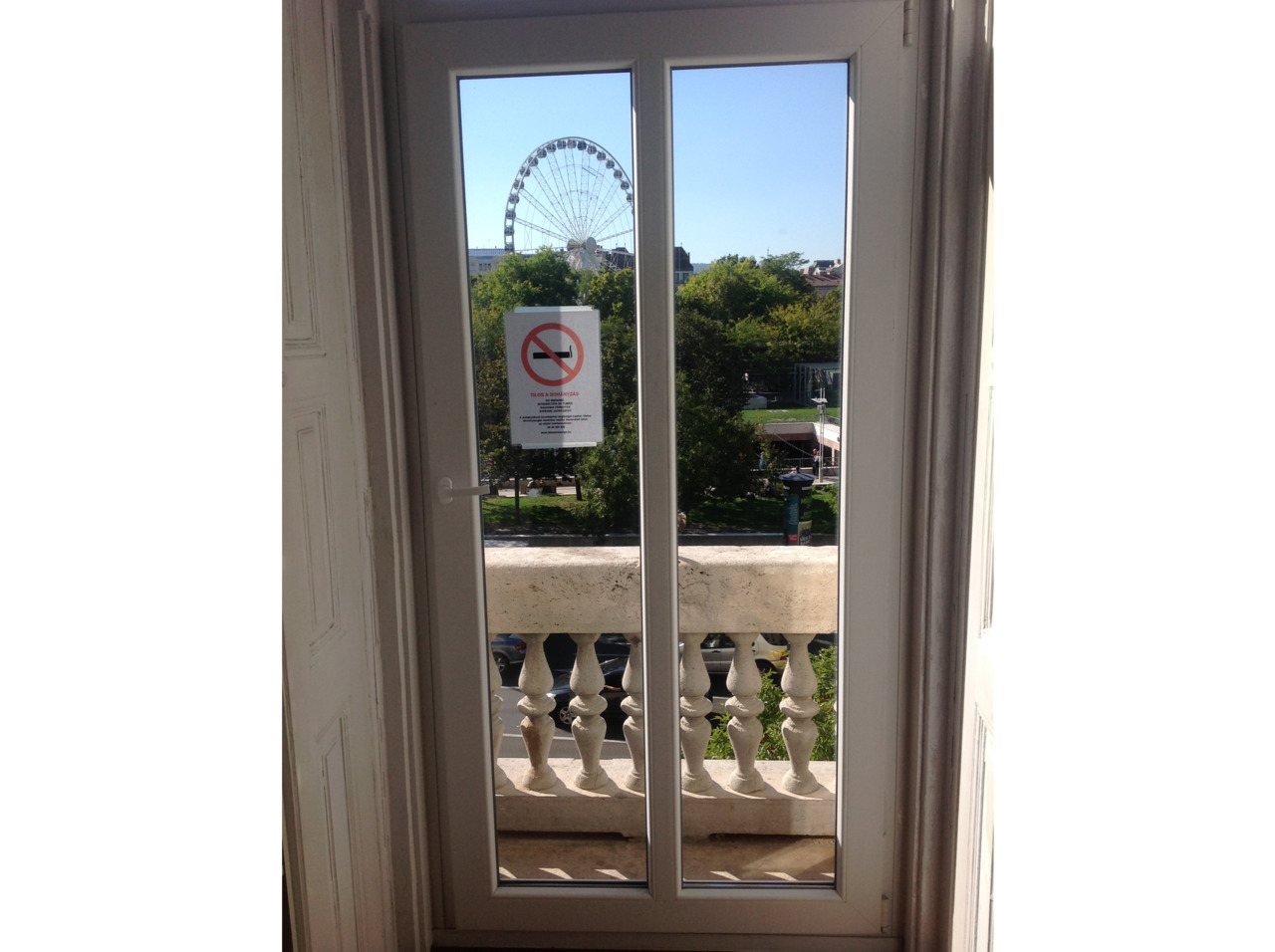
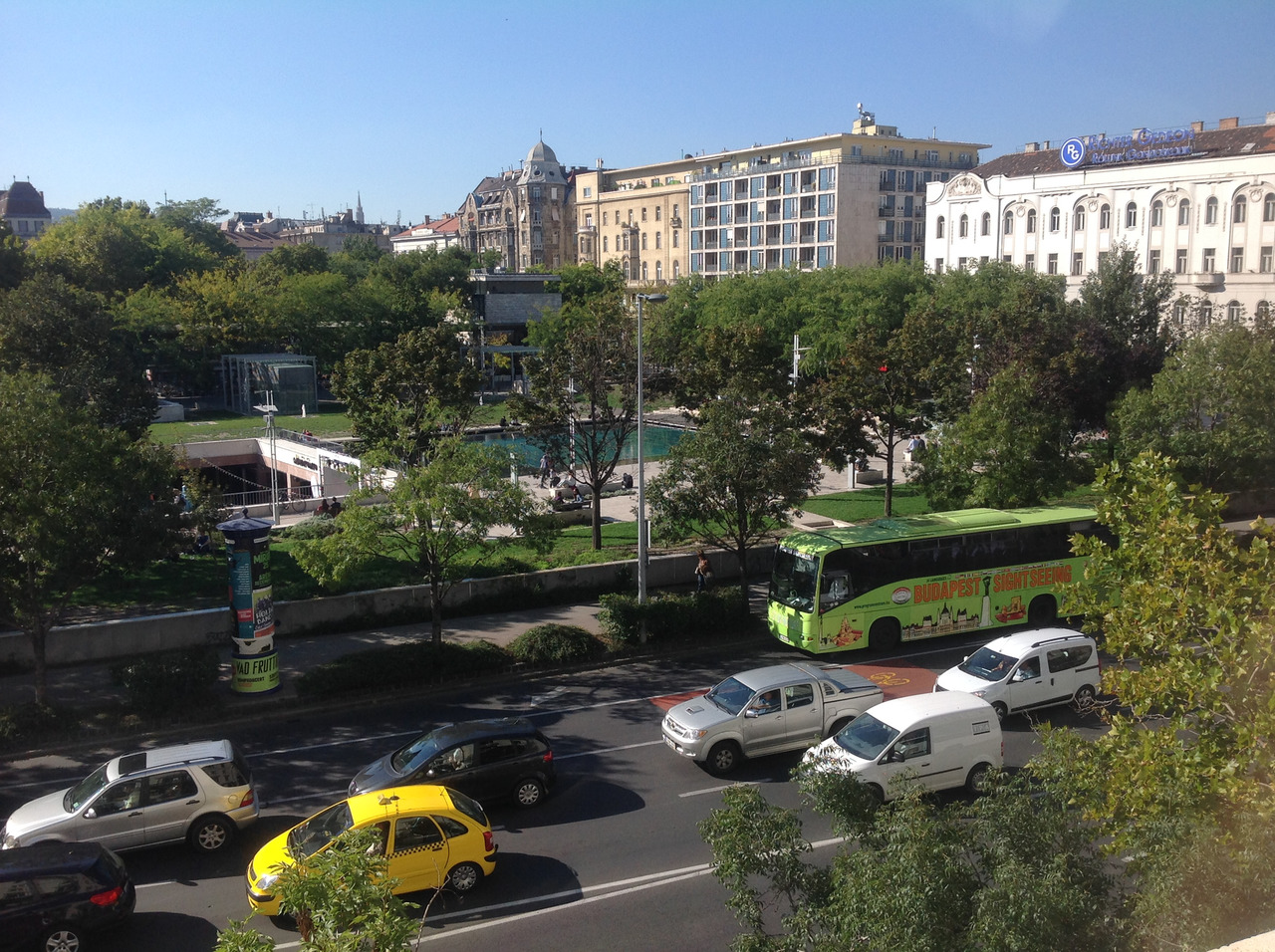
Explore the city
Armed with a great mood, tourists rush to explore the sights of the Hungarian capital. Fortunately, they are in abundance. It’s so hard to see not just for one Weekend, but even for a whole week, if not in a hurry and in detail.
So, let’s start from the heart of Budapest, its famous district “District V”.

Szent István Bazilika
It is worth a little walk along the central street, as before you will open the majestic temple — the Basilica of St. Stephen.
This is the Catholic Cathedral, the largest temple in Hungary. The height of the cathedral from the base to the top of the dome is 96 meters.
The temple was built for half a century, from 1851 to 1905.
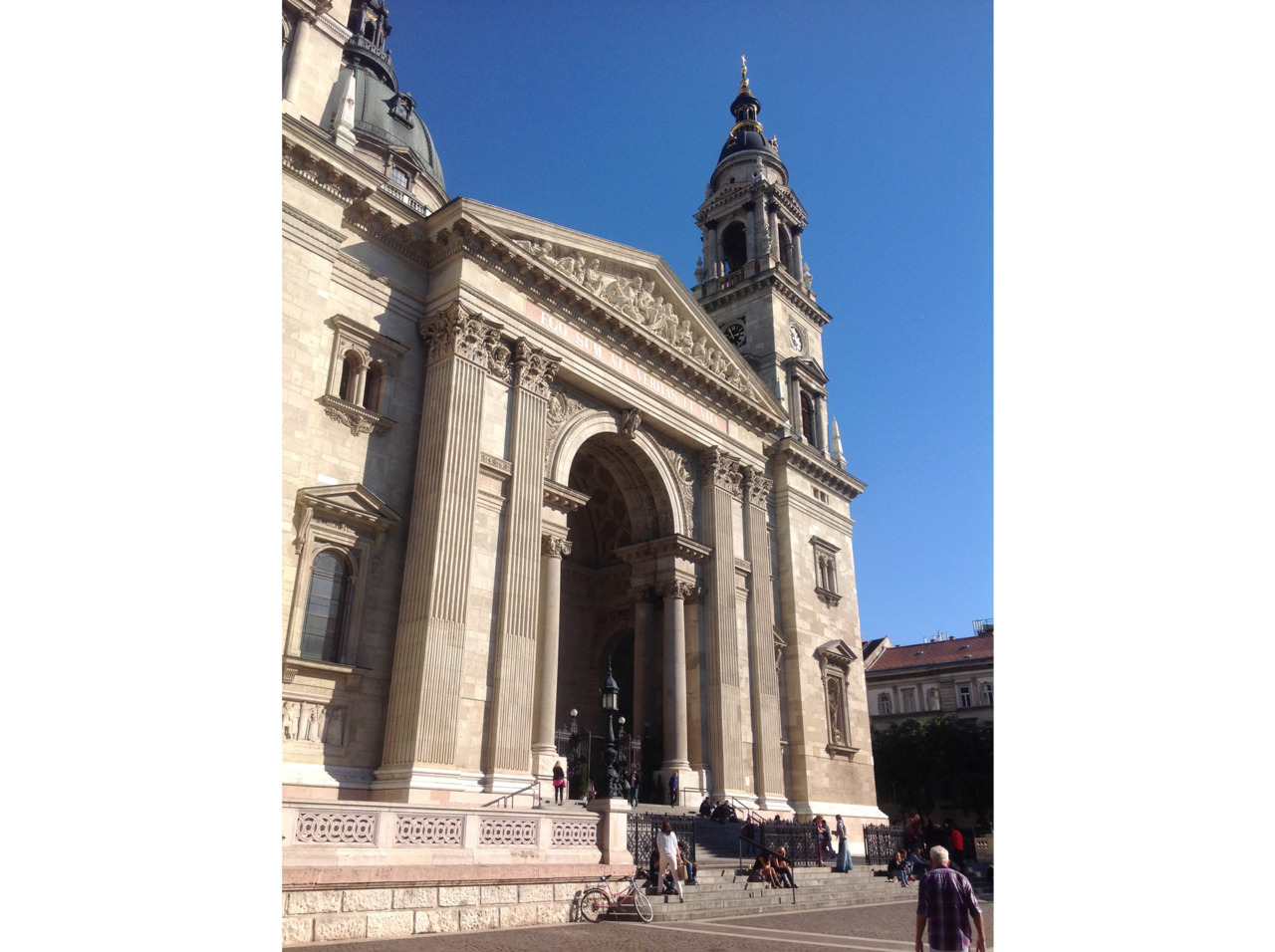

INTERIOR OF THE BASIL OF THE HOLY ISTWAN
Be sure to go inside the cathedral. Near the entrance there is a box for donations. For the entrance, an amount of HUF 500 is indicated, but as a rule, people leave as much as they can. I left just that much.
Inside you will see an ornate decorated with stucco molding and mosaic, marble-covered walls and columns.
In the space of the altar there is a sculpture of Saint Istvan.
Inside you will also be able to see a small exposition devoted to the history of the construction of the cathedral. There is a plan for the layout of the temple, architectural designs and ancient photographs of the cathedral, which was destined to become the pearl and crown of architecture of classical Budapest.
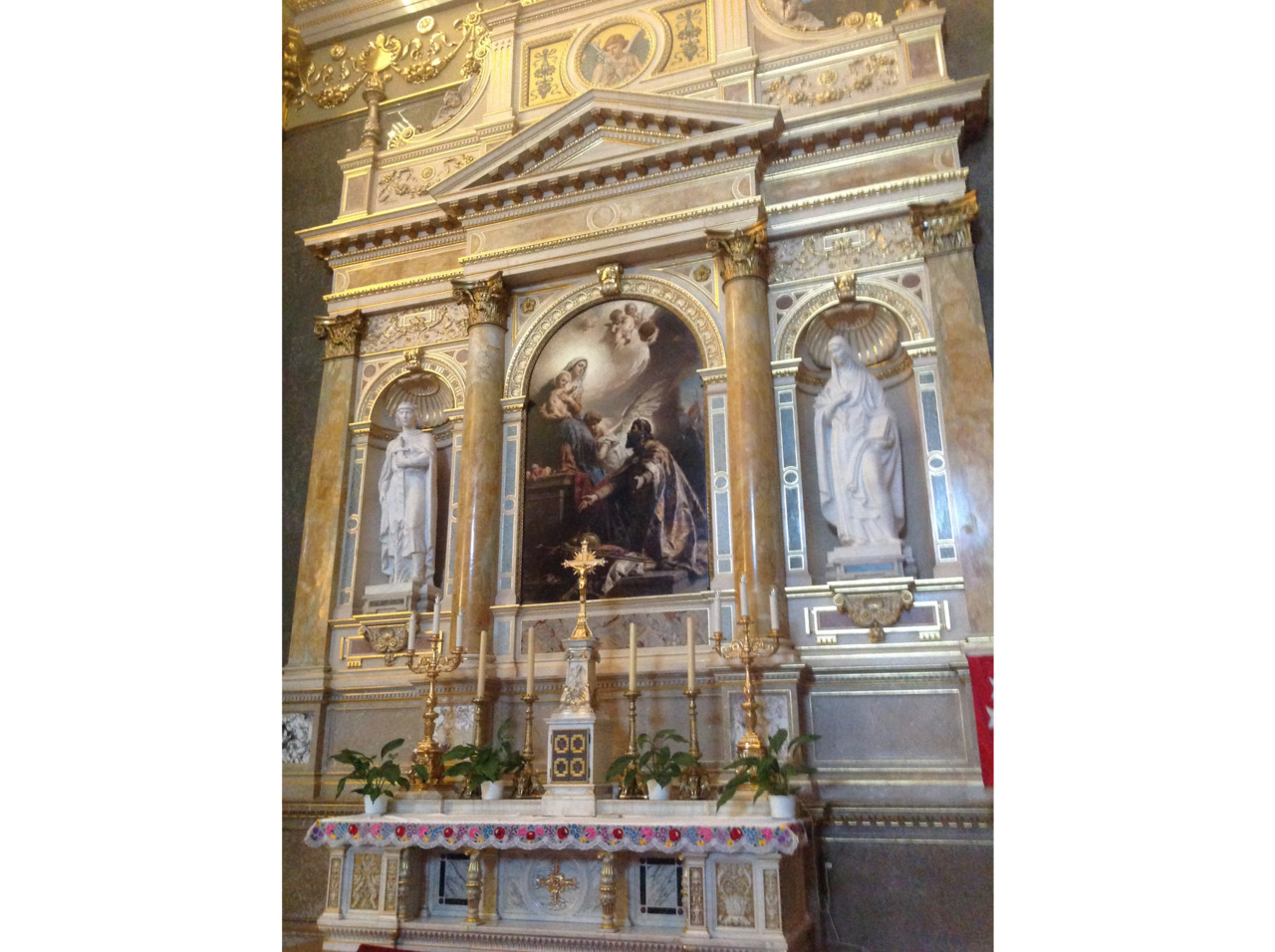
Szent István ter
In front of the Cathedral of St. Stephen there is a square with the same name, on which there is a small walking area and many ice cream parlors, restaurants. Further this street leads to the Danube embankment.
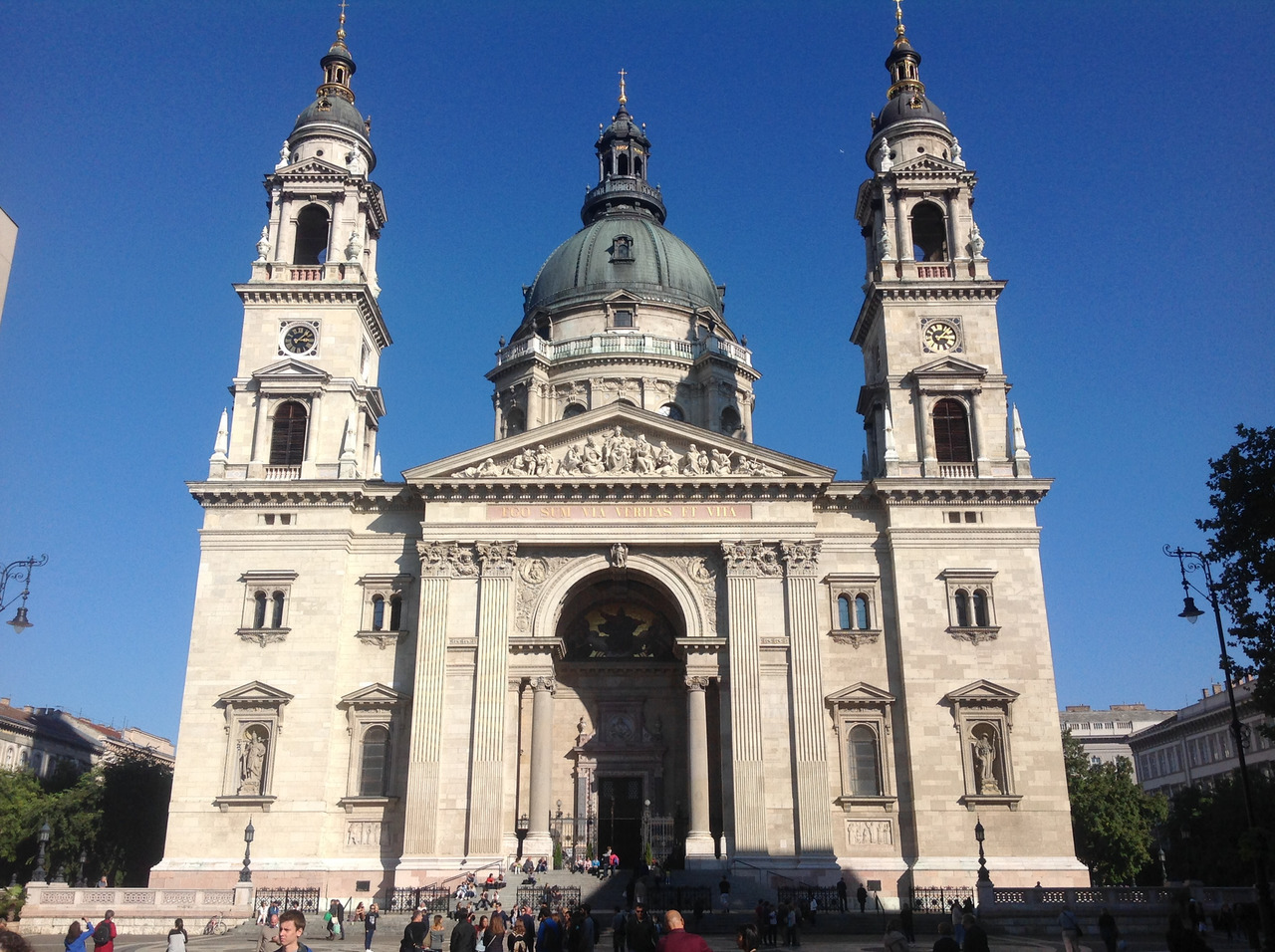
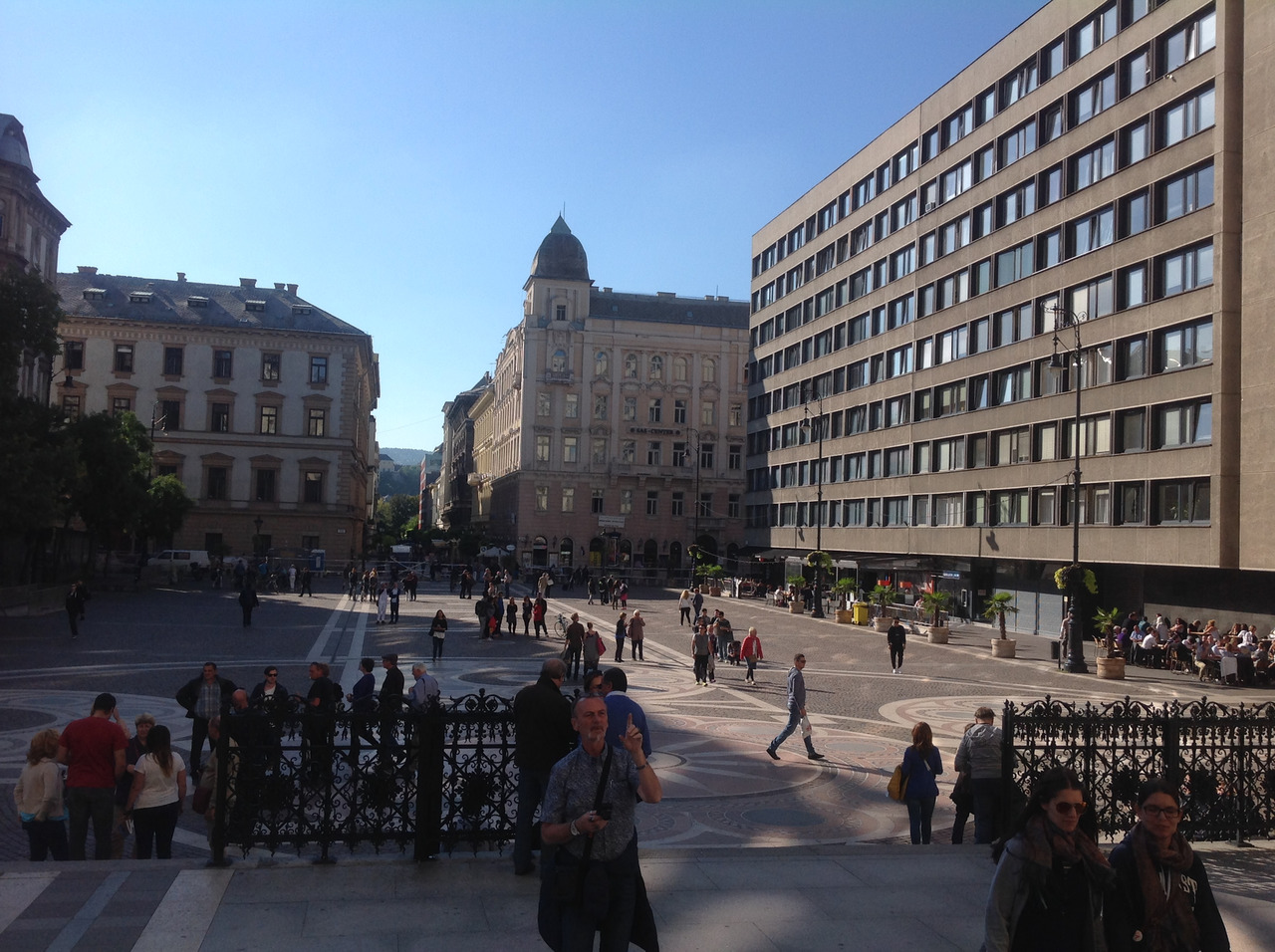
This is the place where it is always pleasant to take a walk — in the morning, in the evening, in the afternoon. Here, a girl approached me with a petition for some help. For some reason I realized that I was from Russia and started to speak a few words in Russian.
STREET Deák Ferenc
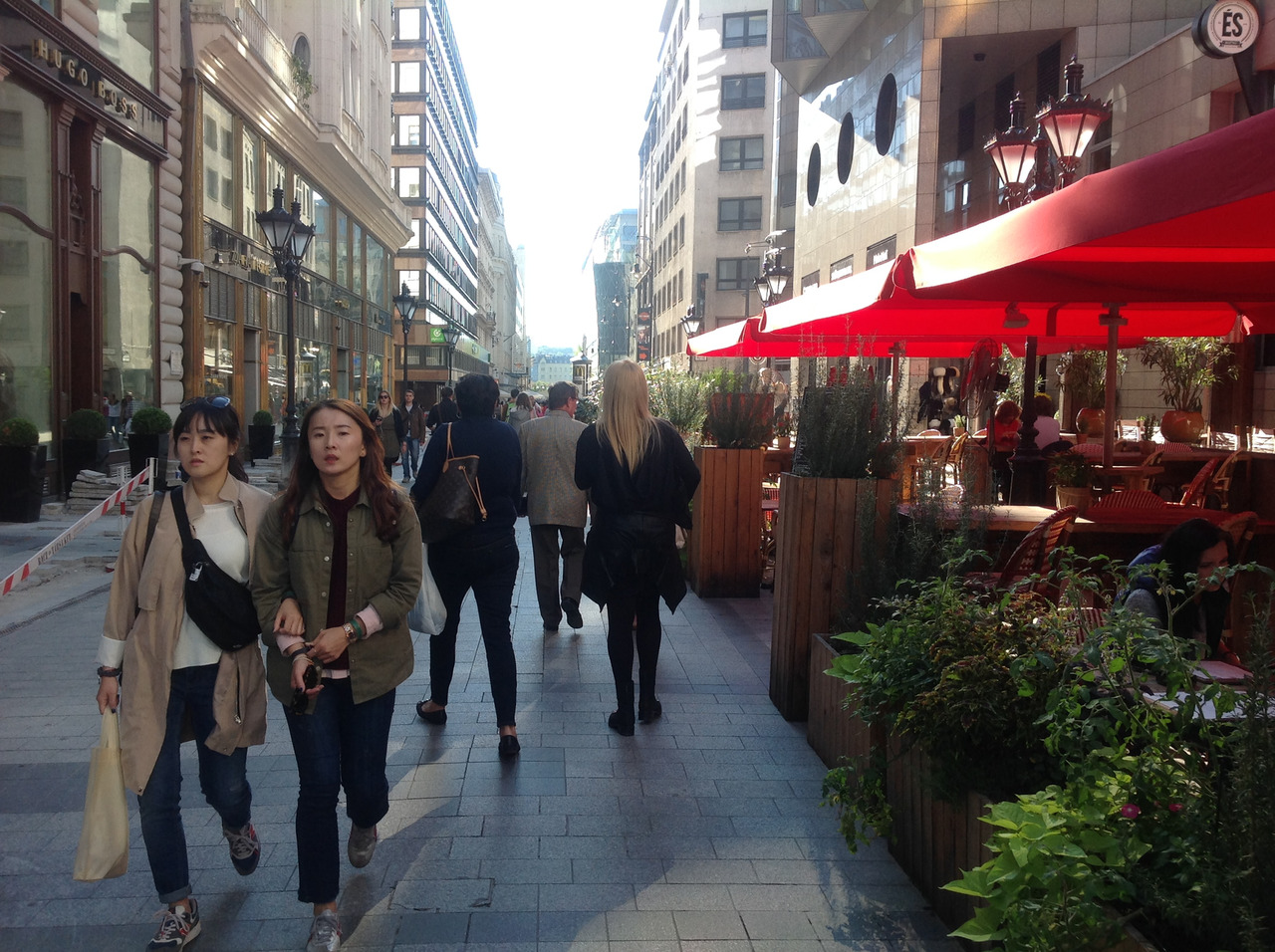
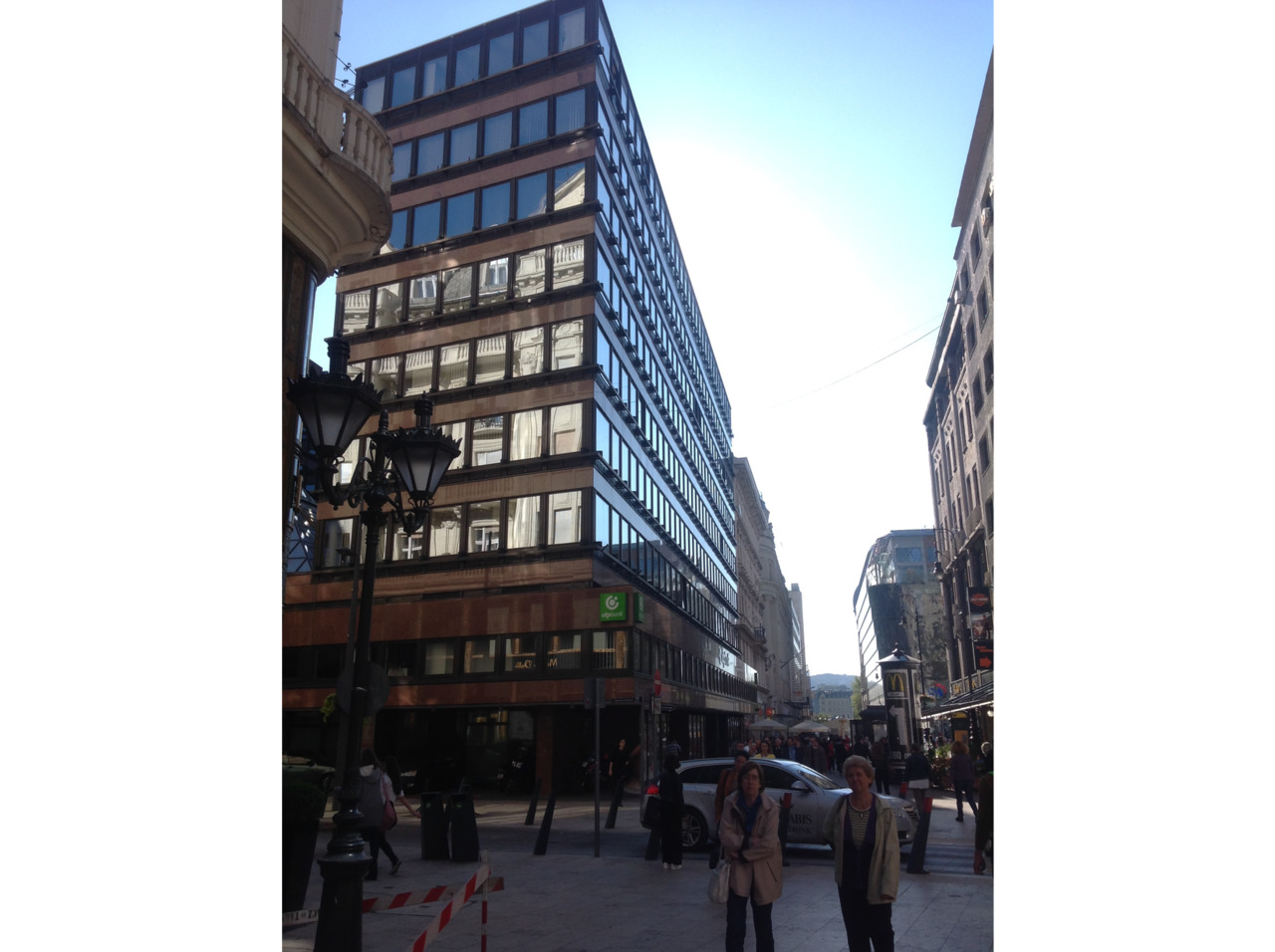
Another street leading to the Danube embankment is Deak Ferenc Street.
This is a real Fashion street. It is full of expensive shops, hotels, restaurants and local women of fashion. At the same time it is pedestrian, which makes it even more frequented by tourists.
Vörösmarty tér

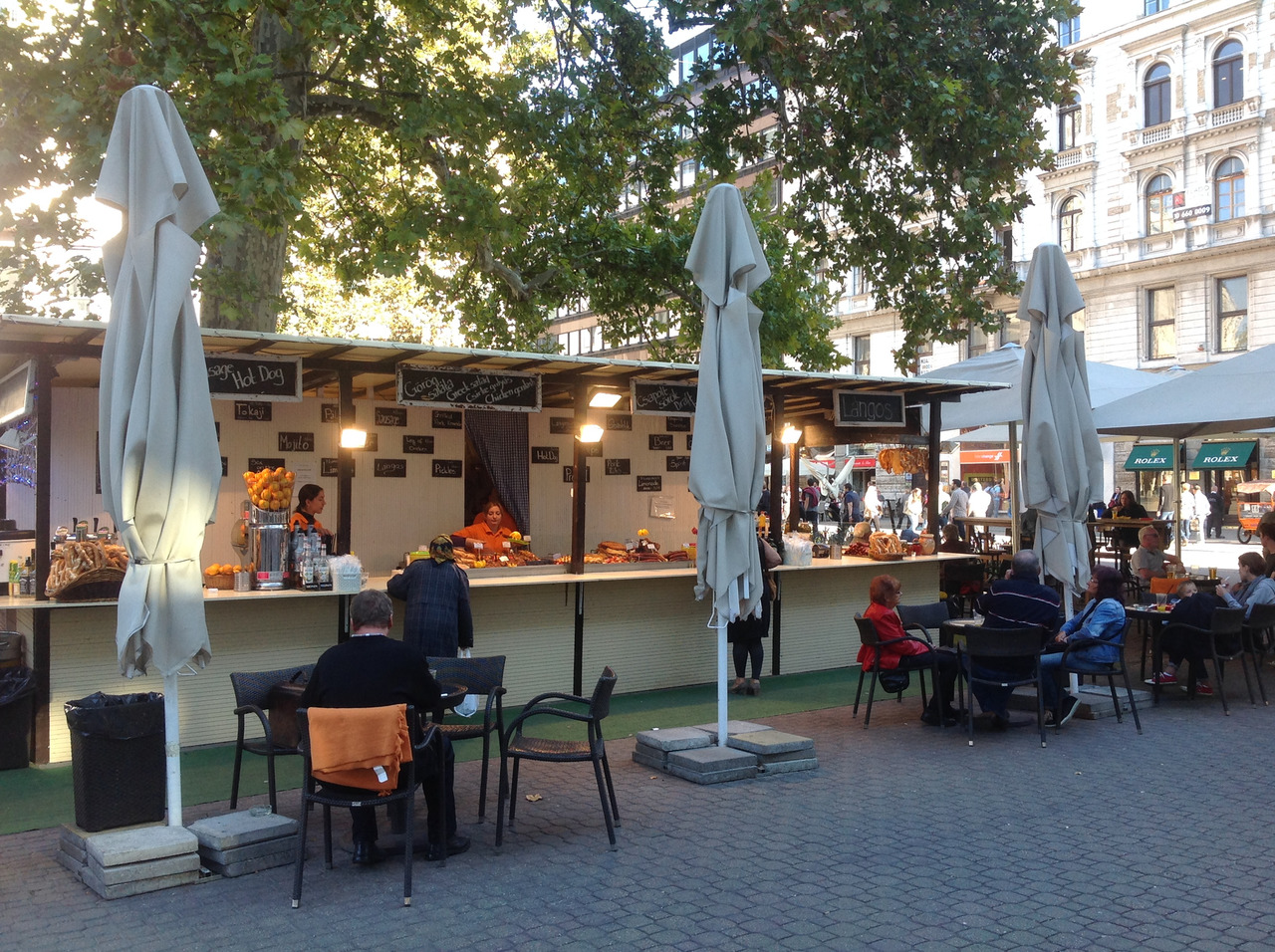
If you walk along Deak Ferenc street, on the way you will definitely get to the area of Vöröschmarkt ter. It was so named in honor of the Hungarian poet Mihai Vöröschmarty.
Under the square is the Budapest subway station of the same name, the terminal on the first line.
During the Christmas holidays, a festive Christmas market is arranged here.
ANOTHER McDonalds
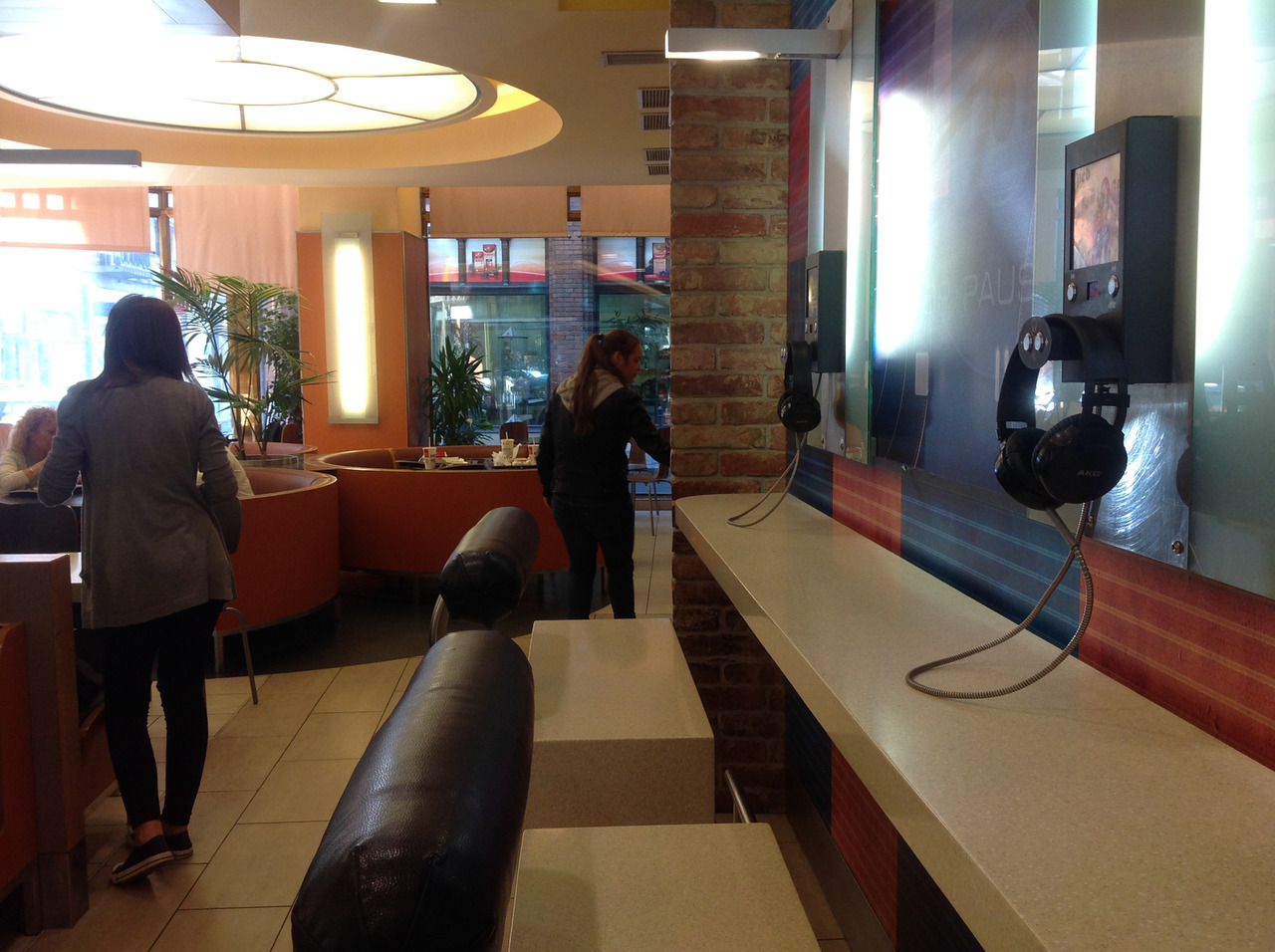
In order to save time and money for lunch, I went to one of the McDonald’s located in the 5th district.
With my familiar travelers, we have long noted that, unlike Russia in Europe, in all McDonald’s, food has a completely different taste. Perhaps this is due to the fact that the products are supplied by local producers.
What was in this unusual bistro is the headphones installed in the wall, where you can listen to music at dinner, choosing to your taste. There are classical music, pop, country and anything. Never seen this.
MONUMENT OF VÖRÖSMARTY
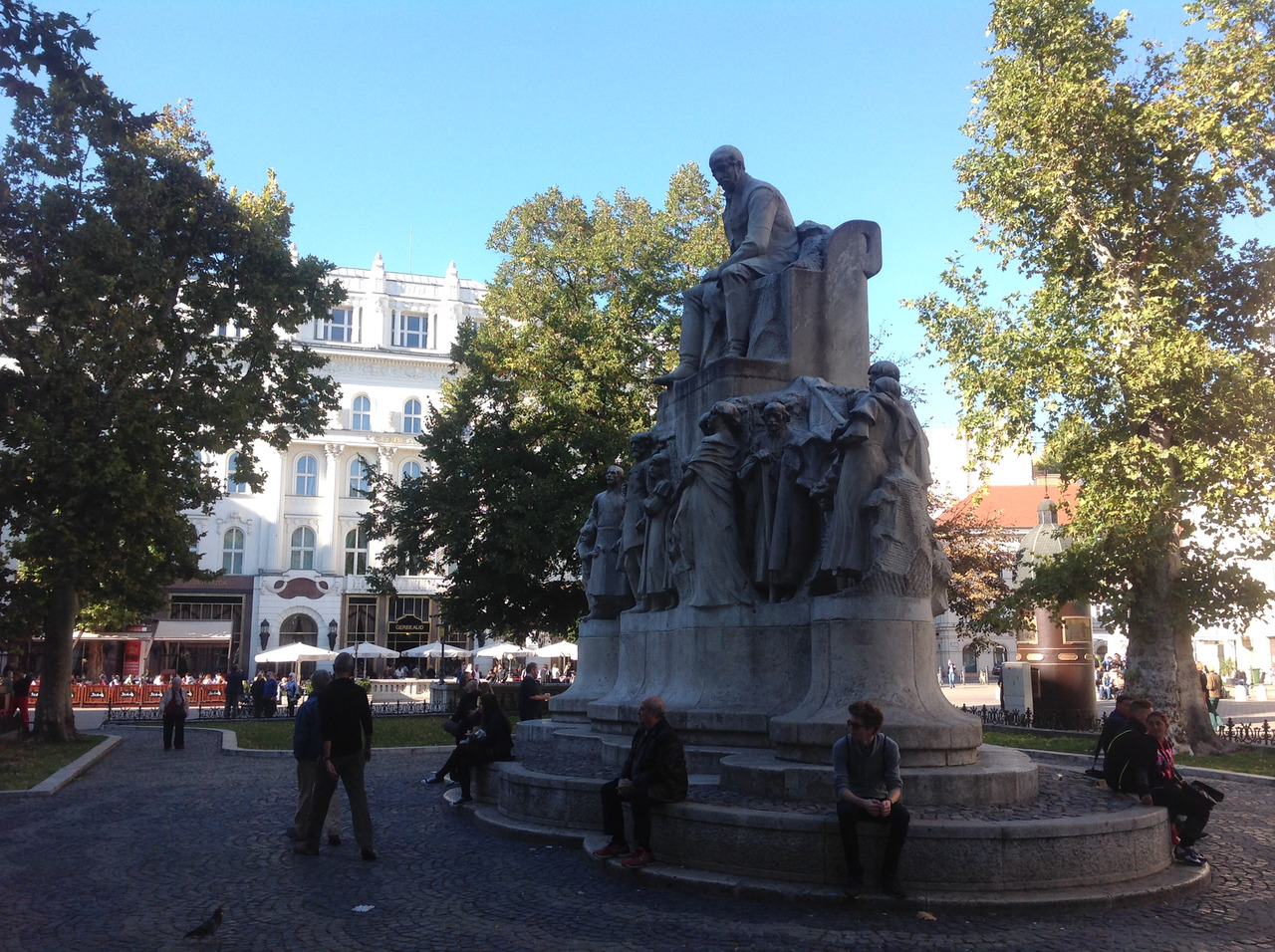
In the shade of trees and surrounded by shops on the first floors of houses on the square there is a monument to a poet from Carrara marble (Italian Alps).
Streetart
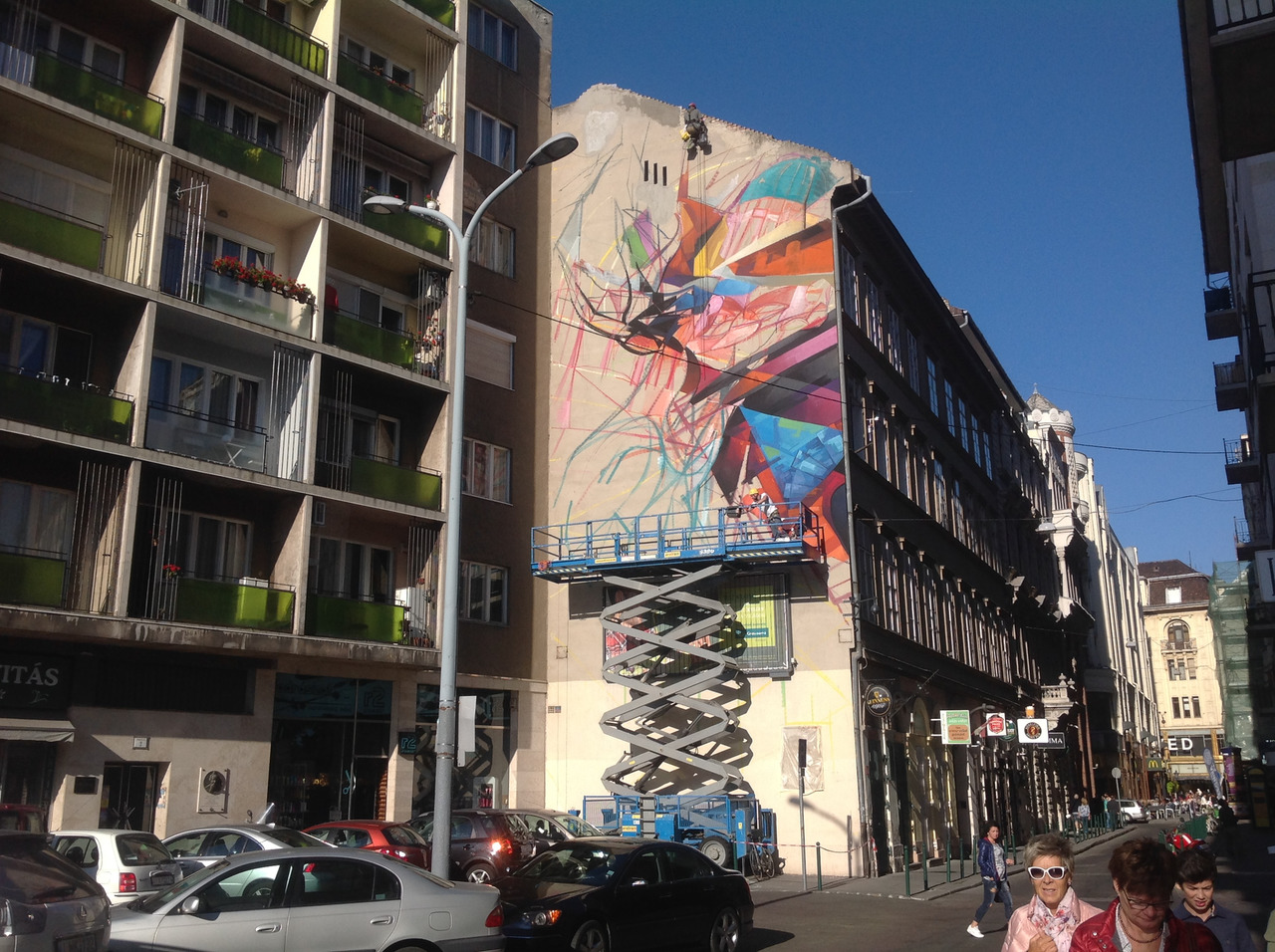
I think it’s cool to have around the city colorful graffiti — works of contemporary artists. I think this is an excellent variant of decorating the faceless walls of many houses in the center of the city.
Dormition Cathedral
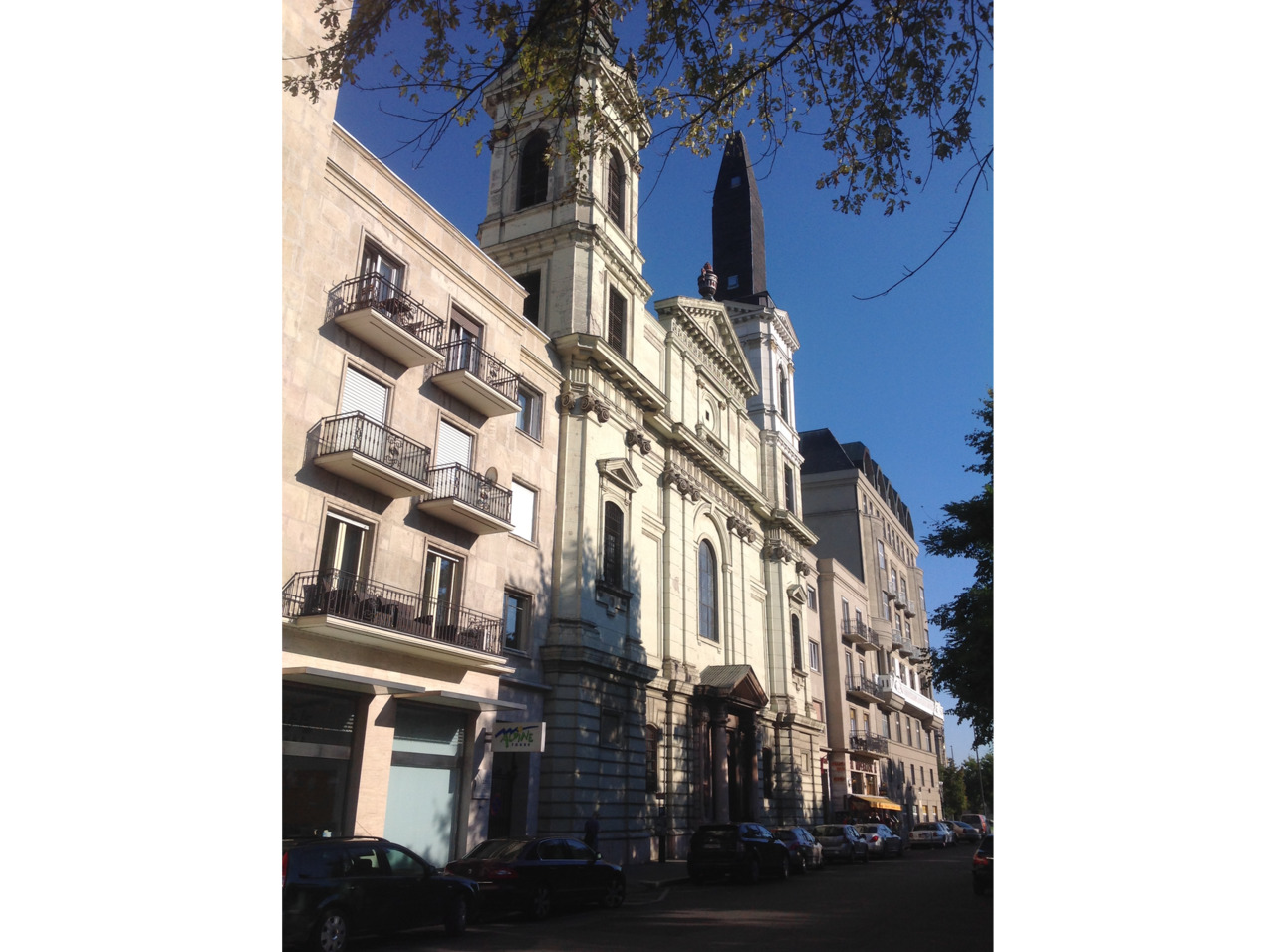
This is an Orthodox church built in 1791—1801. It was founded by a community of Greeks and Macedonian-Vlachs, who lived here.
During the Second World War, the temple suffered, one of the towers was destroyed.
Since 1950, the cathedral is under the jurisdiction of the Russian Orthodox Church. In 2000 the church became the cathedral of the Hungarian diocese.
Danube embankment
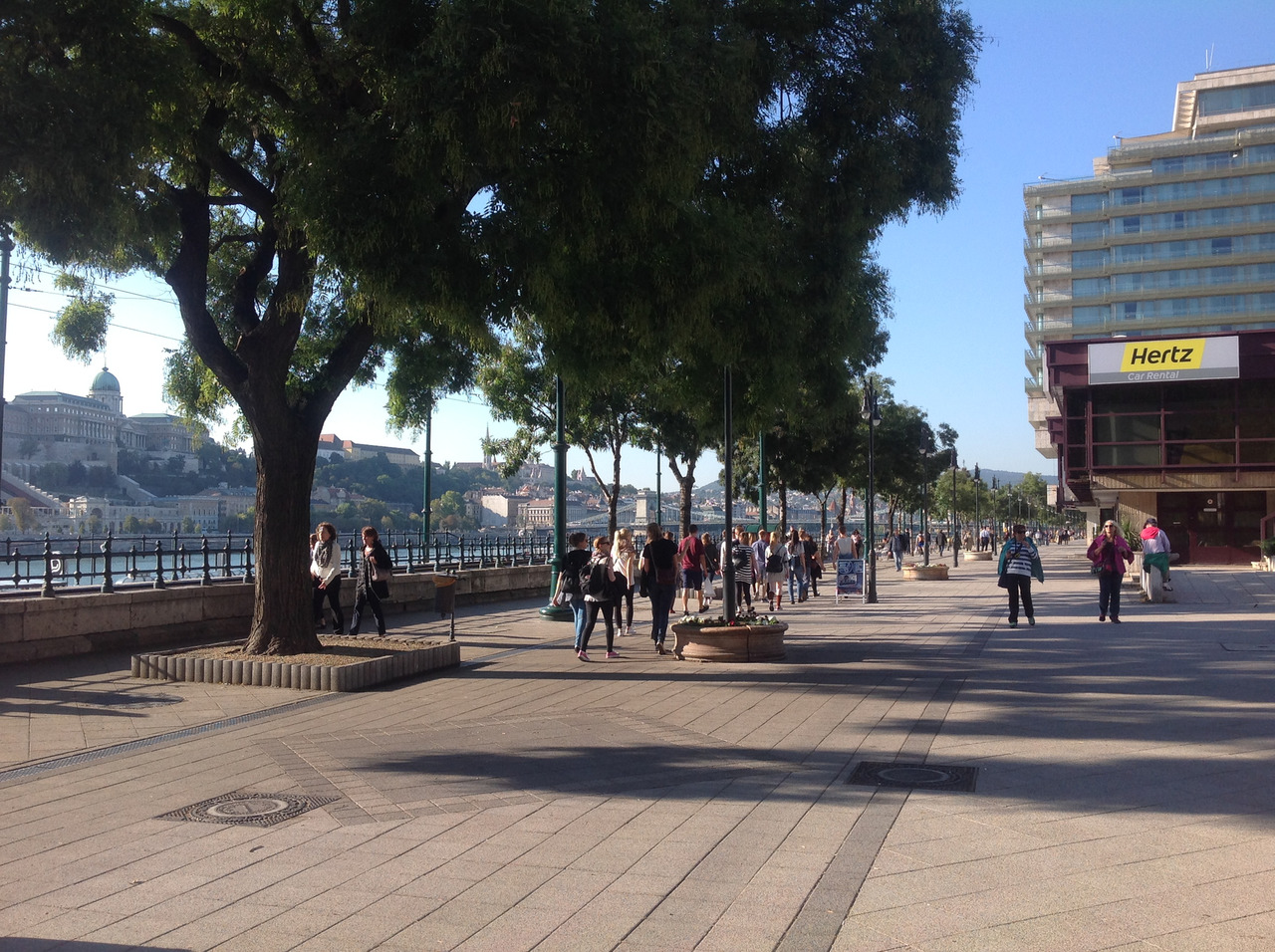
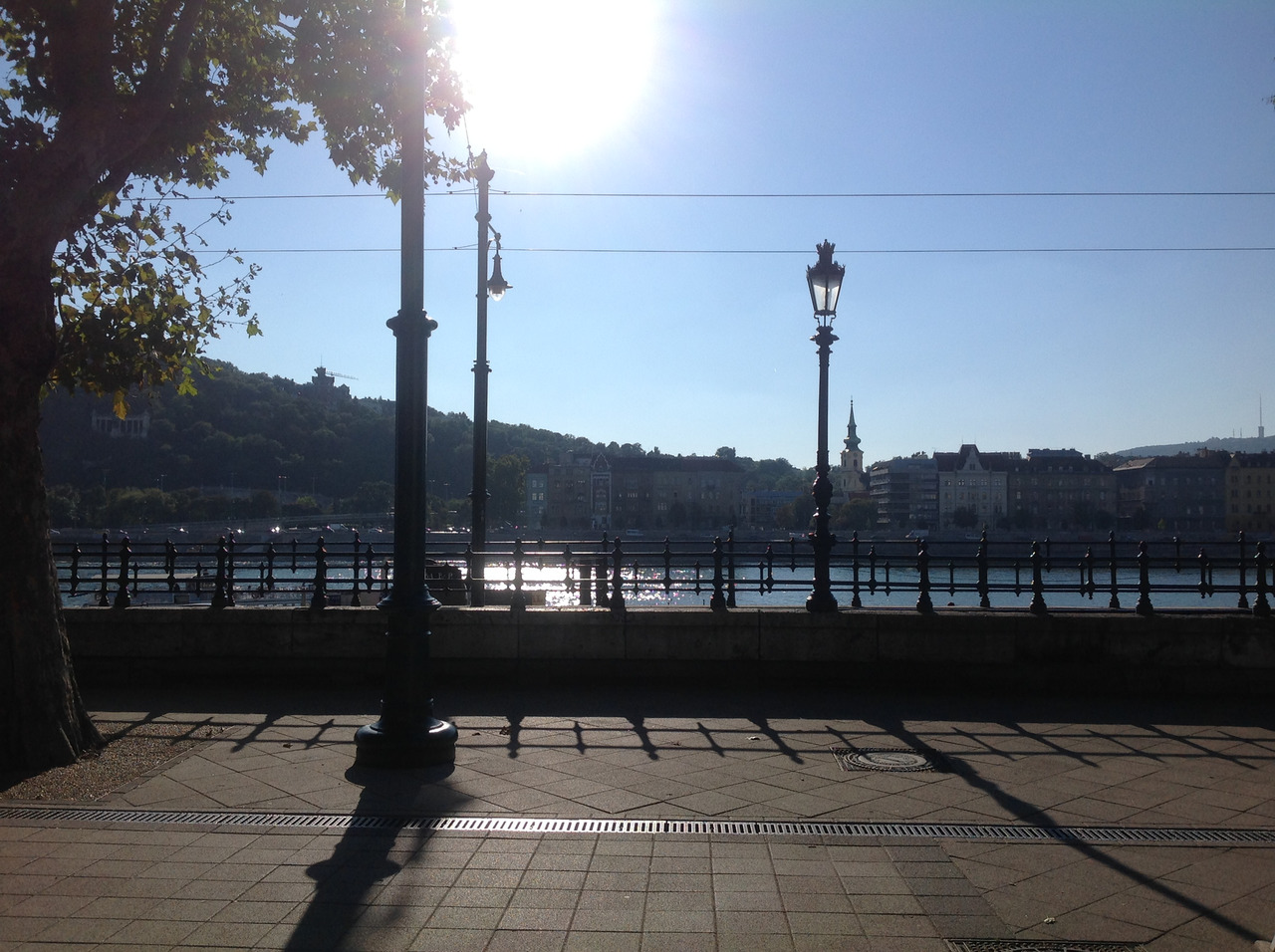
You can talk about it for a very long time. Exactly as much as walking along it, considering the monuments, works of architecture, square, inhabitants and guests of Budapest.
The Danube is the second longest river in Europe. It is also called the “international river”, as it goes beyond Hungary to the territories of Germany, Slovakia, Austria, Croatia, Serbia, Romania, Bulgaria, Croatia, Ukraine and Moldova.
TRAM RAILS
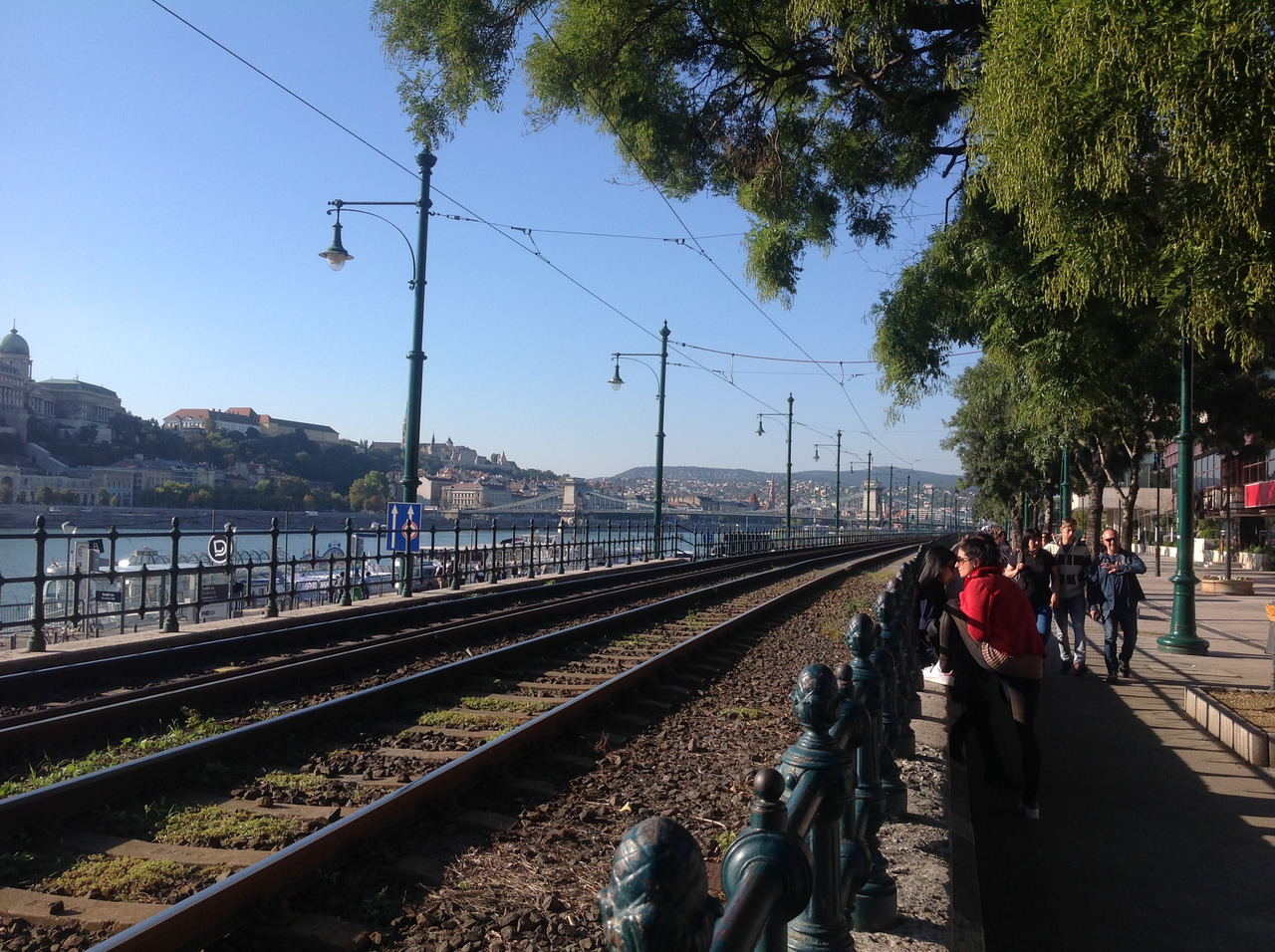
The peculiarity of the embankment is that two tracks of tramways with periodic stops separate the pedestrian zone from the water’s edge. So, the embankment can be passed and passed.
THE BUDAPEST TRAM
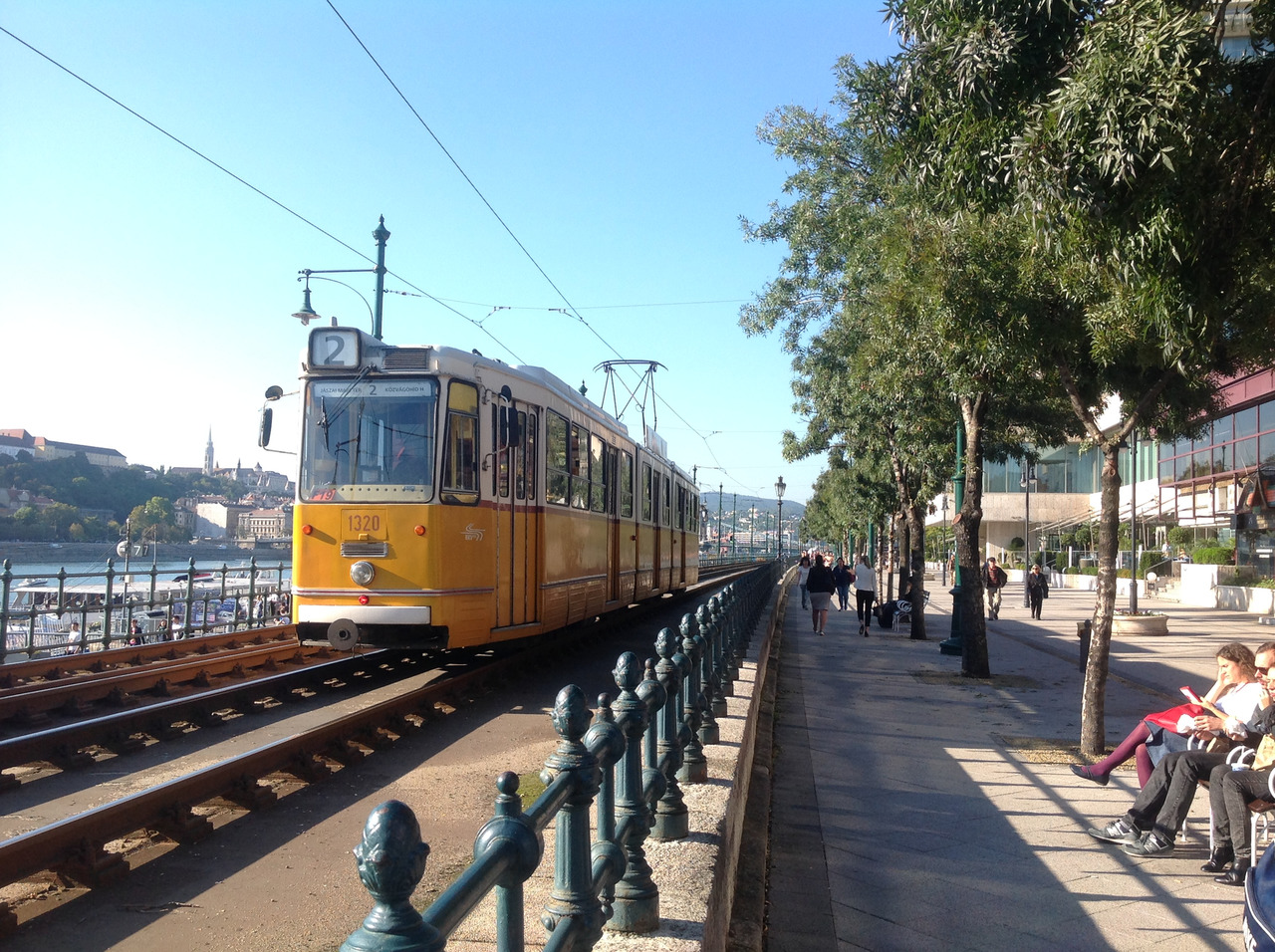
Trams are one of the most significant sights of modern and historical Budapest. In the city there is a very ramified tram network, which allows this type of transport to overtake the subway by passenger traffic, leaving the palm tree only to bus transportation.
In addition, the tram network in Budapest is one of the largest in the world. Its length is 157 kilometers. Its history dates back to 1866, when the first horse-drawn races began to ride the streets of Budapest.
Here you can also take a unique tram ride on the cog railway — route number 60.
HOTEL MARIOTT BUDAPEST
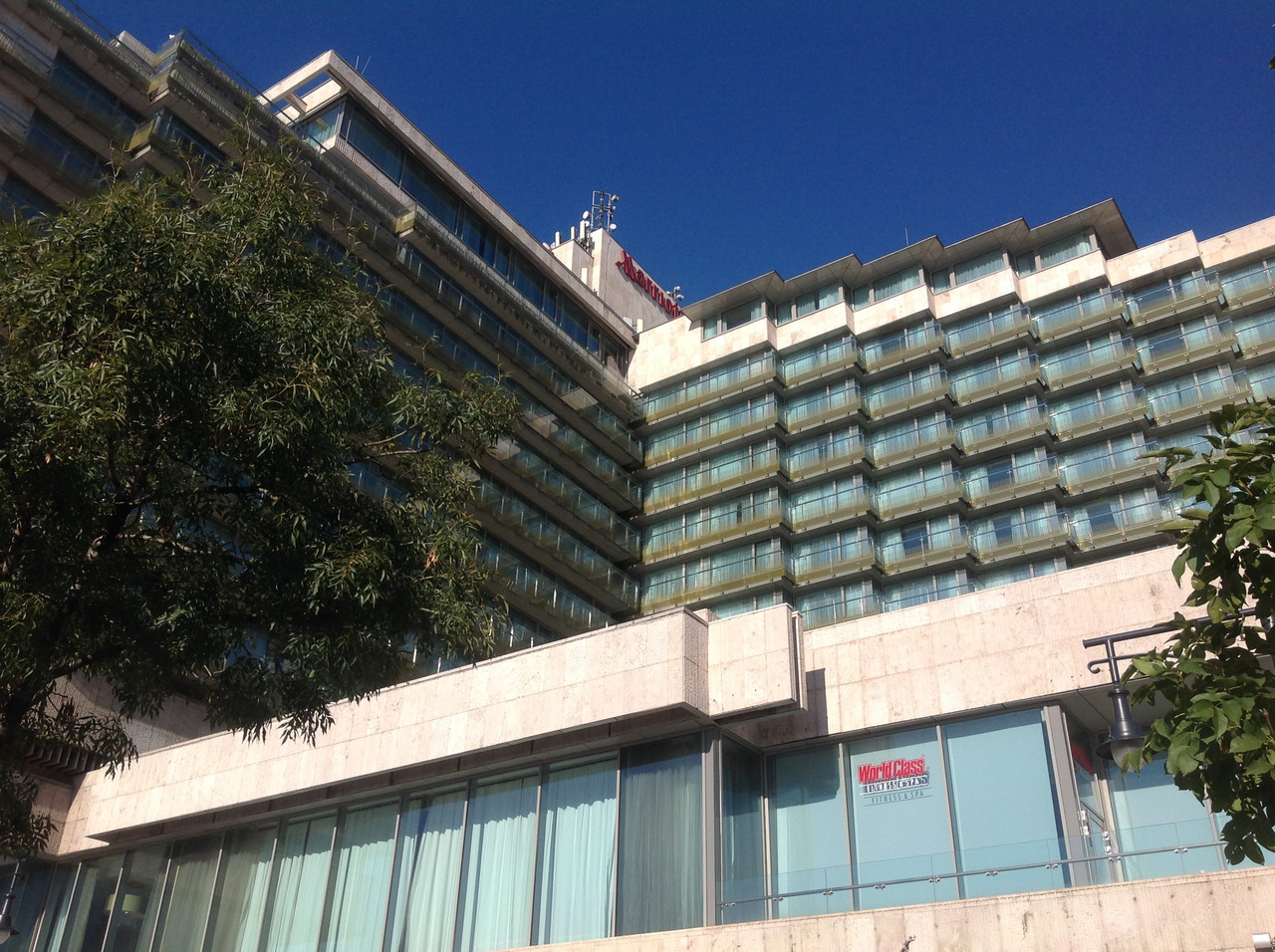
On the waterfront, you are most likely to pay attention to this huge modern hotel — the Budapest Marriott Hotel, of all 364 rooms offering views of the Danube.
Shakespeare Monument
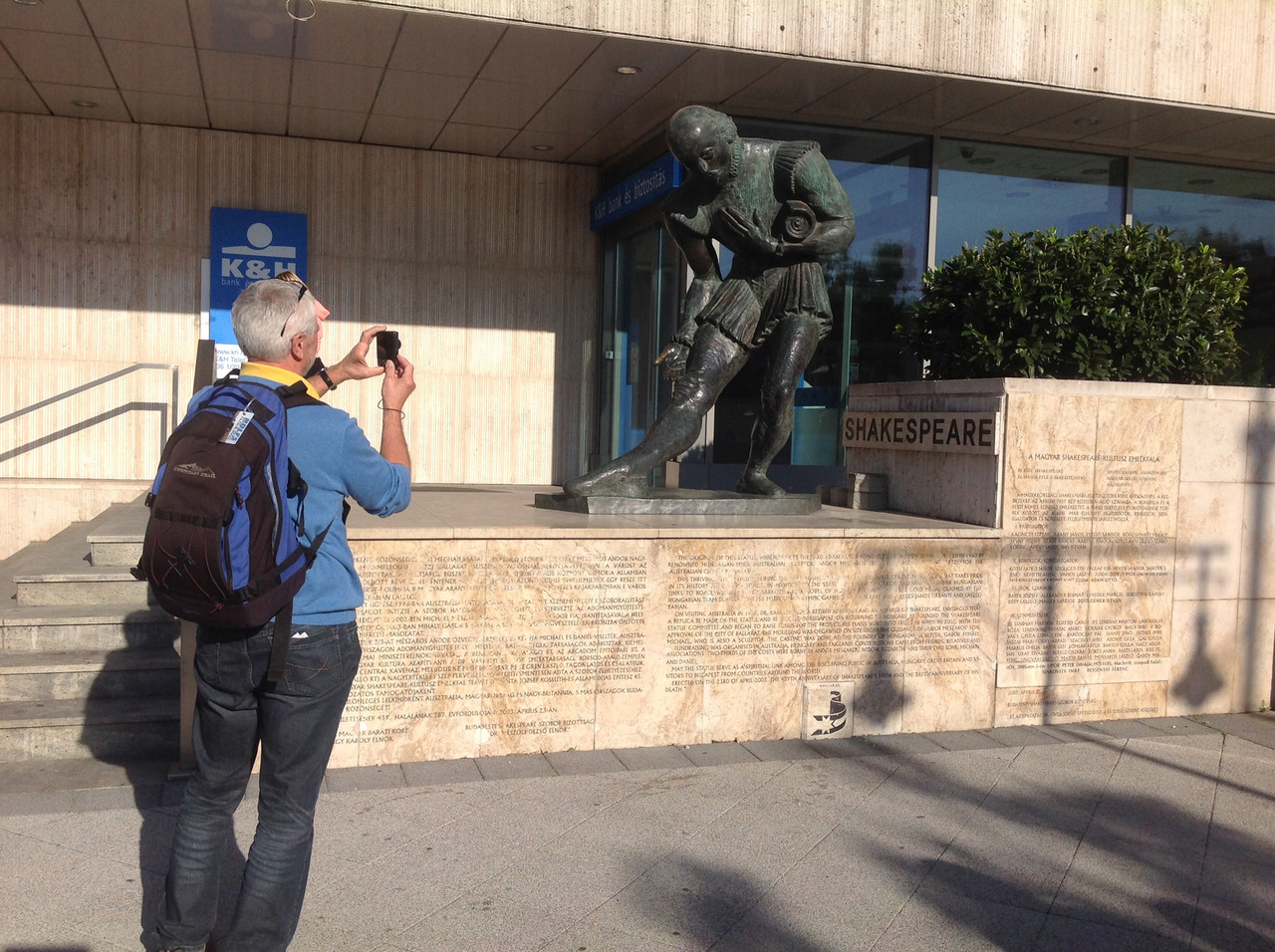
VIGADO
The word “Vigado” in Hungarian means literally “make a ball”, “have fun”.
This is the second largest concert hall in the city, which opens out on its facade to the Danube embankment. It was opened in 1865.
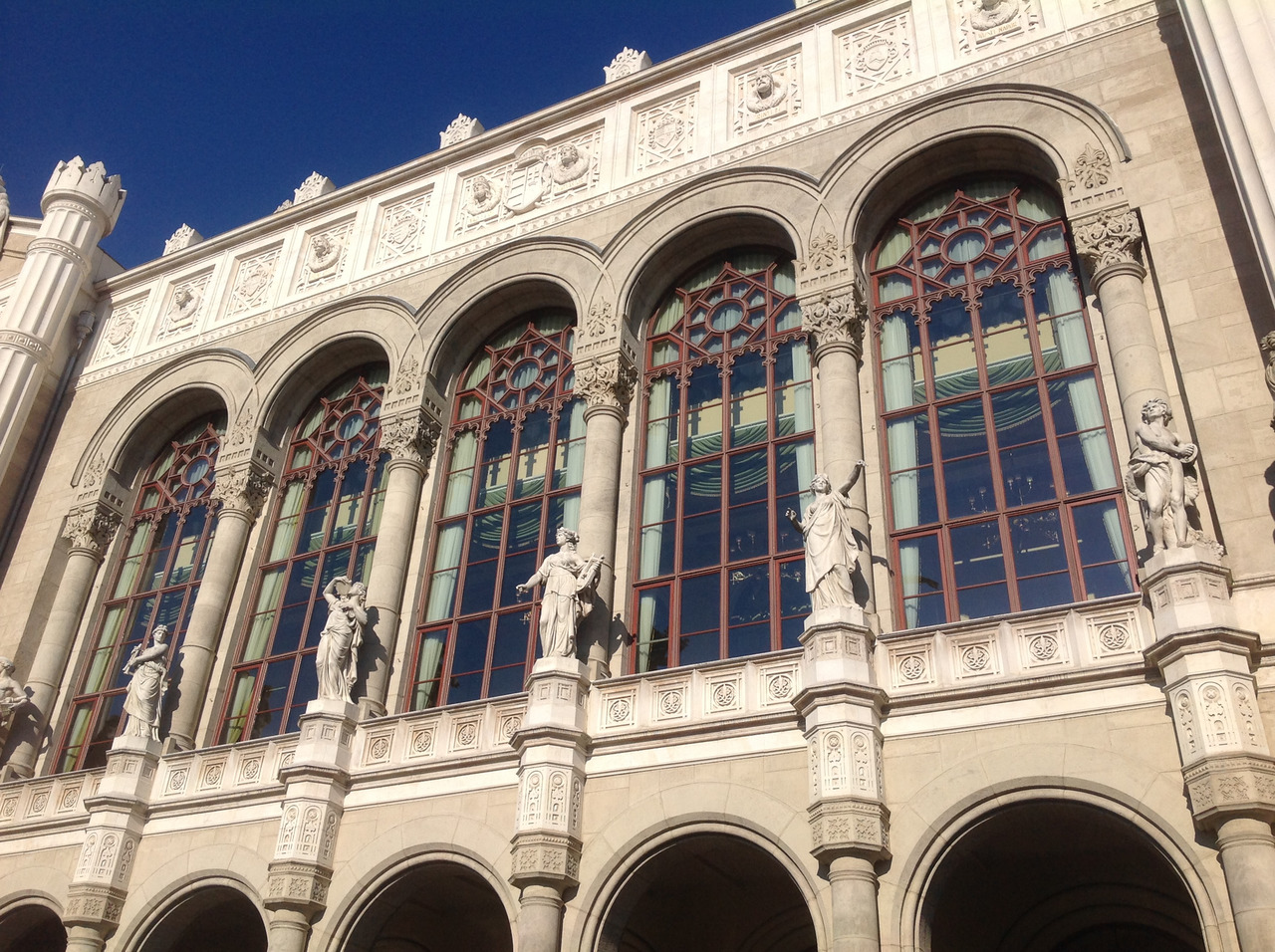
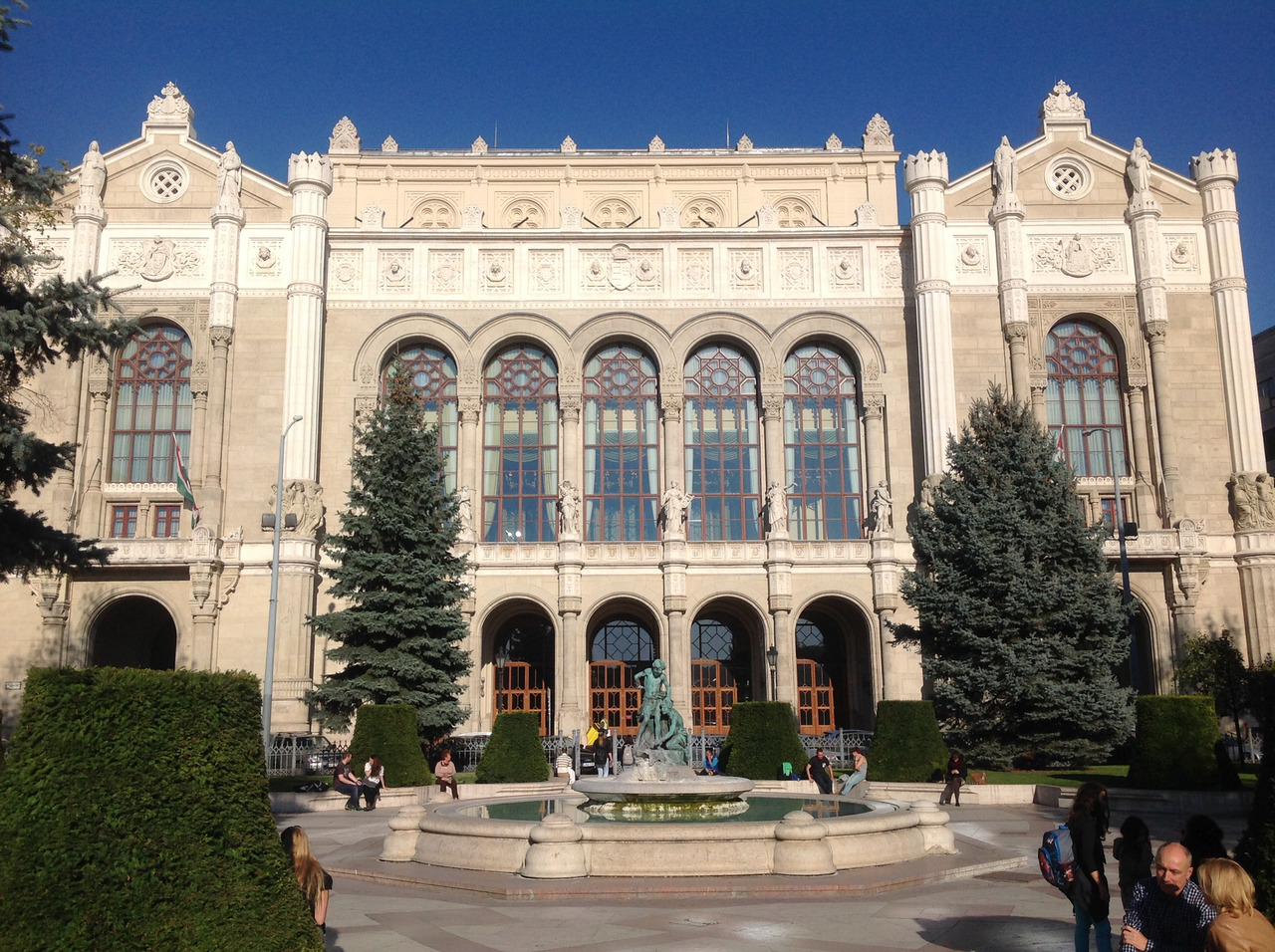
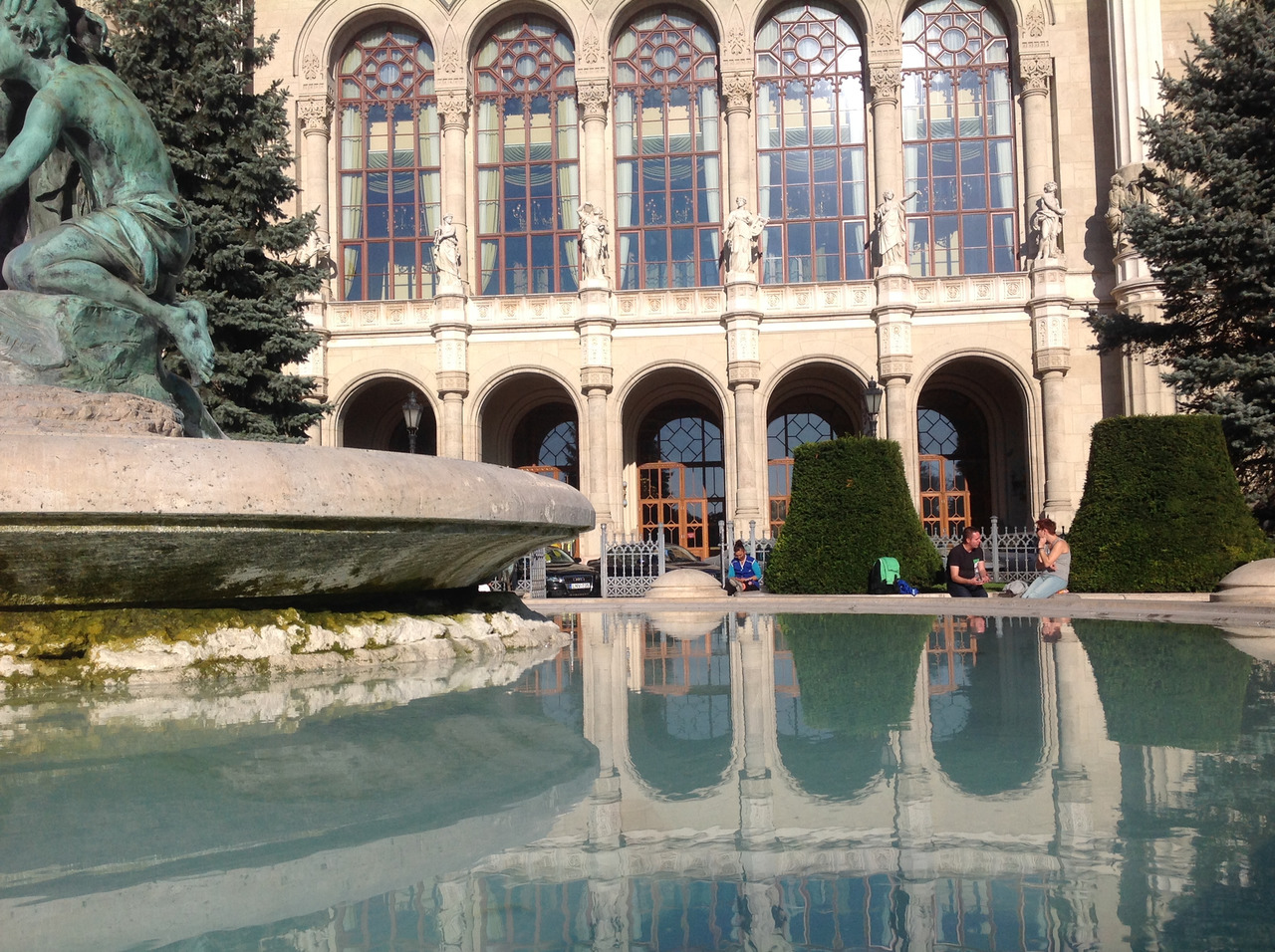
In this building there were Liszt, Brahms and Wagner.
Pay attention to the statues and busts of famous historical figures — from monarchs to art geniuses who adorned the facade.
GIRL PLAYING WITH THE DOG
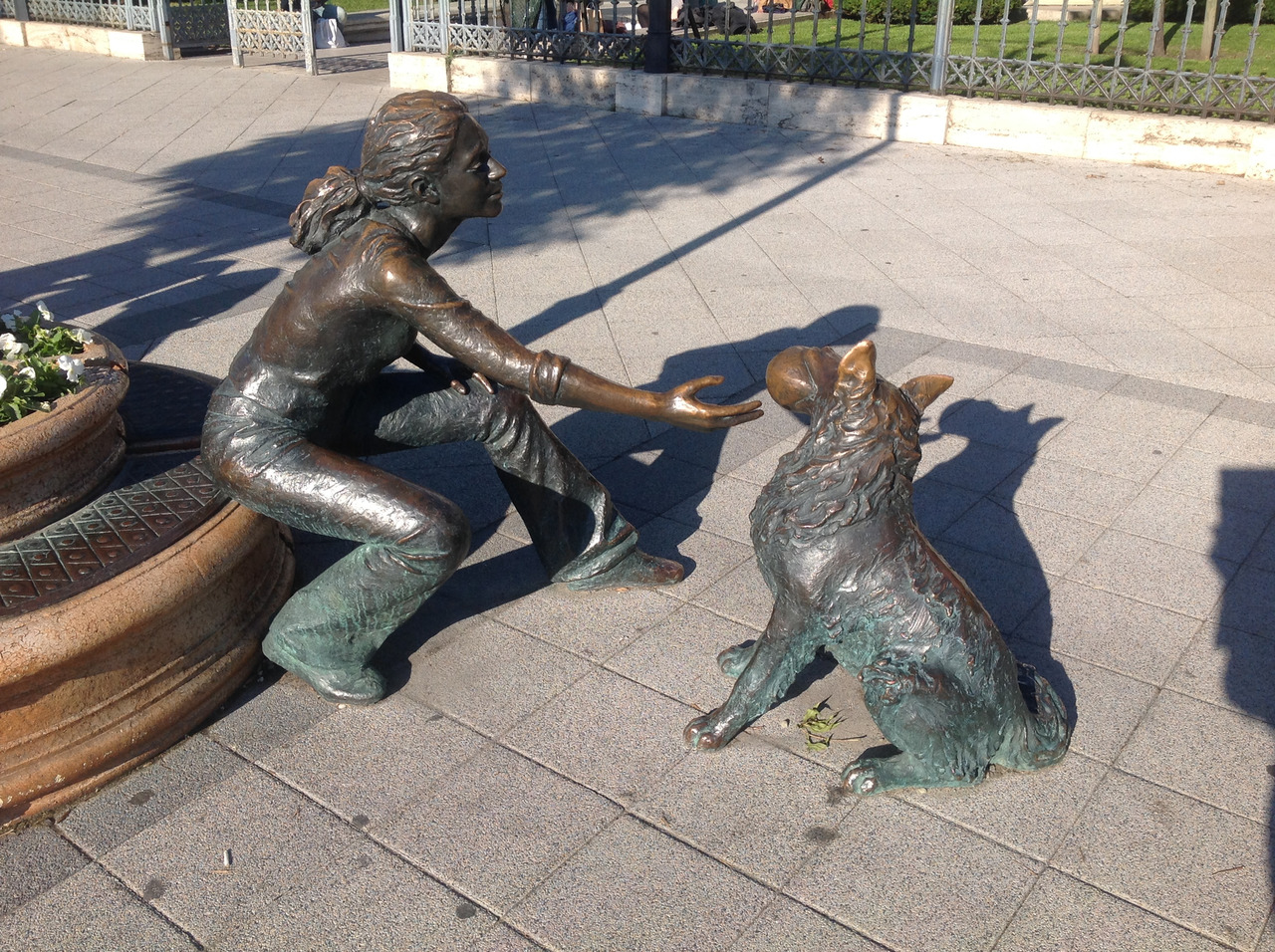
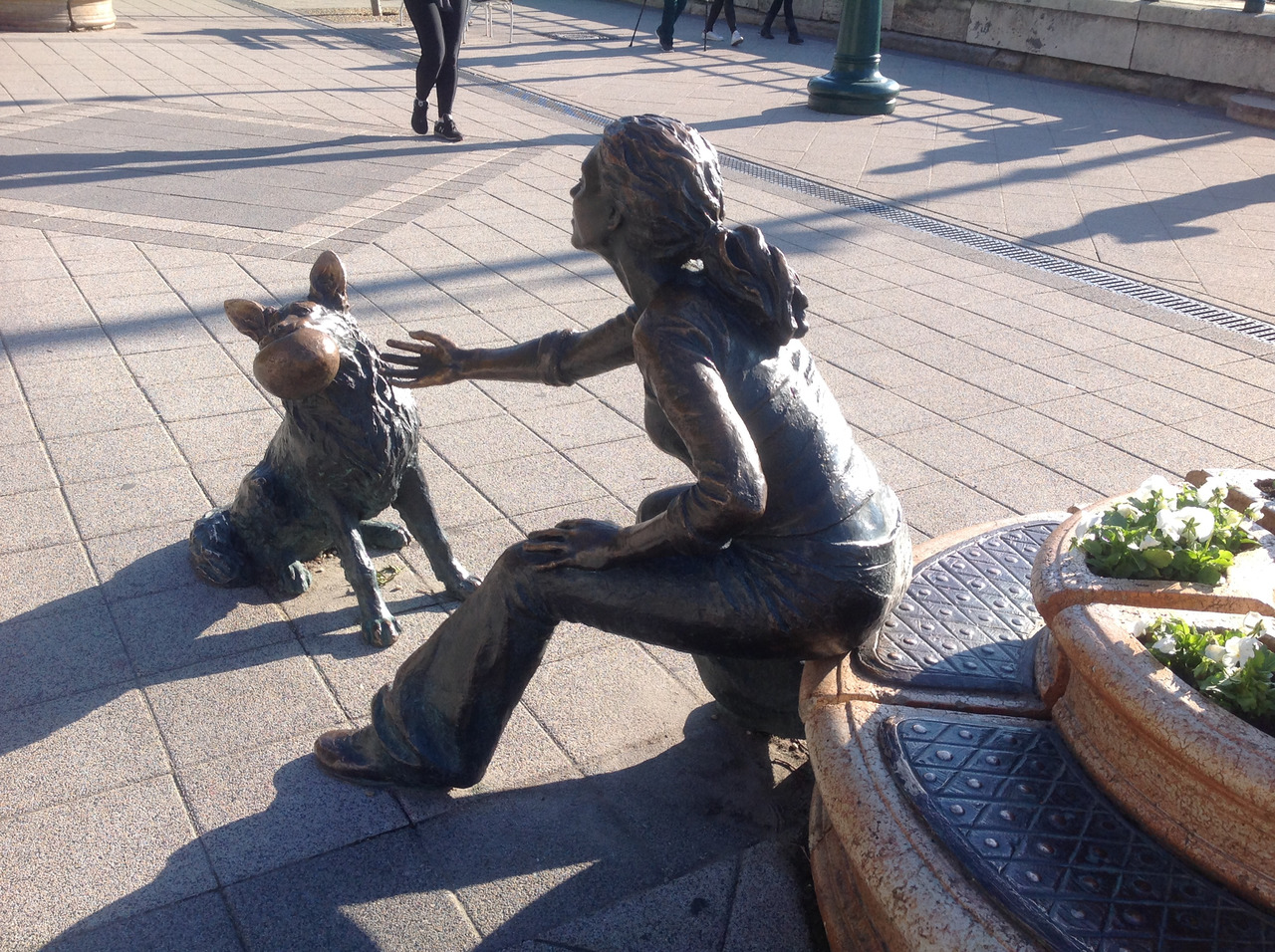
This monument is considered an unspoken symbol of all children of Hungary. It is he who opens a whole galaxy of monuments located on the embankment.
TRISHAW

By the way, it is on the embankment that you can see pedicabs that will drive a few kilometers, and they will tell you about the city for the contract price.
LITTLE PRINCESS
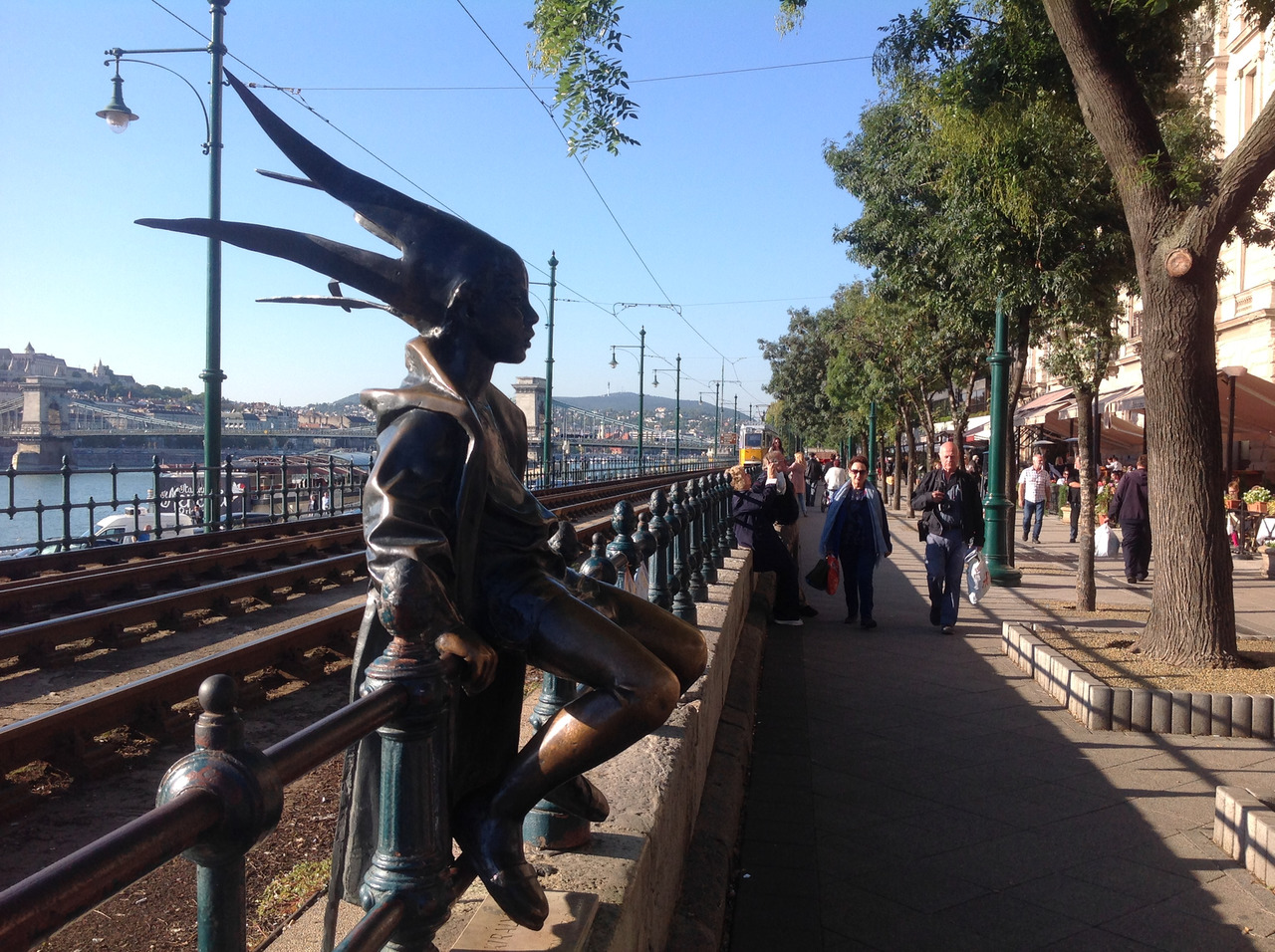
By analogy with the character of the work of Exupery, in the center of Budapest there is a small, but very soulful monument dedicated to the little princess. It was installed in 1972 by the sculptor Laszlo Marton, and the way to create the sculpture was his daughter, who in childhood loved to wear a crown.
Having rubbed the knees of a little princess, you can make a wish, and it will certainly come true.
Sofitel BUDAPEST
This five-star hotel with one of its facades overlooking the embankment, and the other on the square and the park Szechenyi. Now the hotel belongs to the international network Intercontinental.
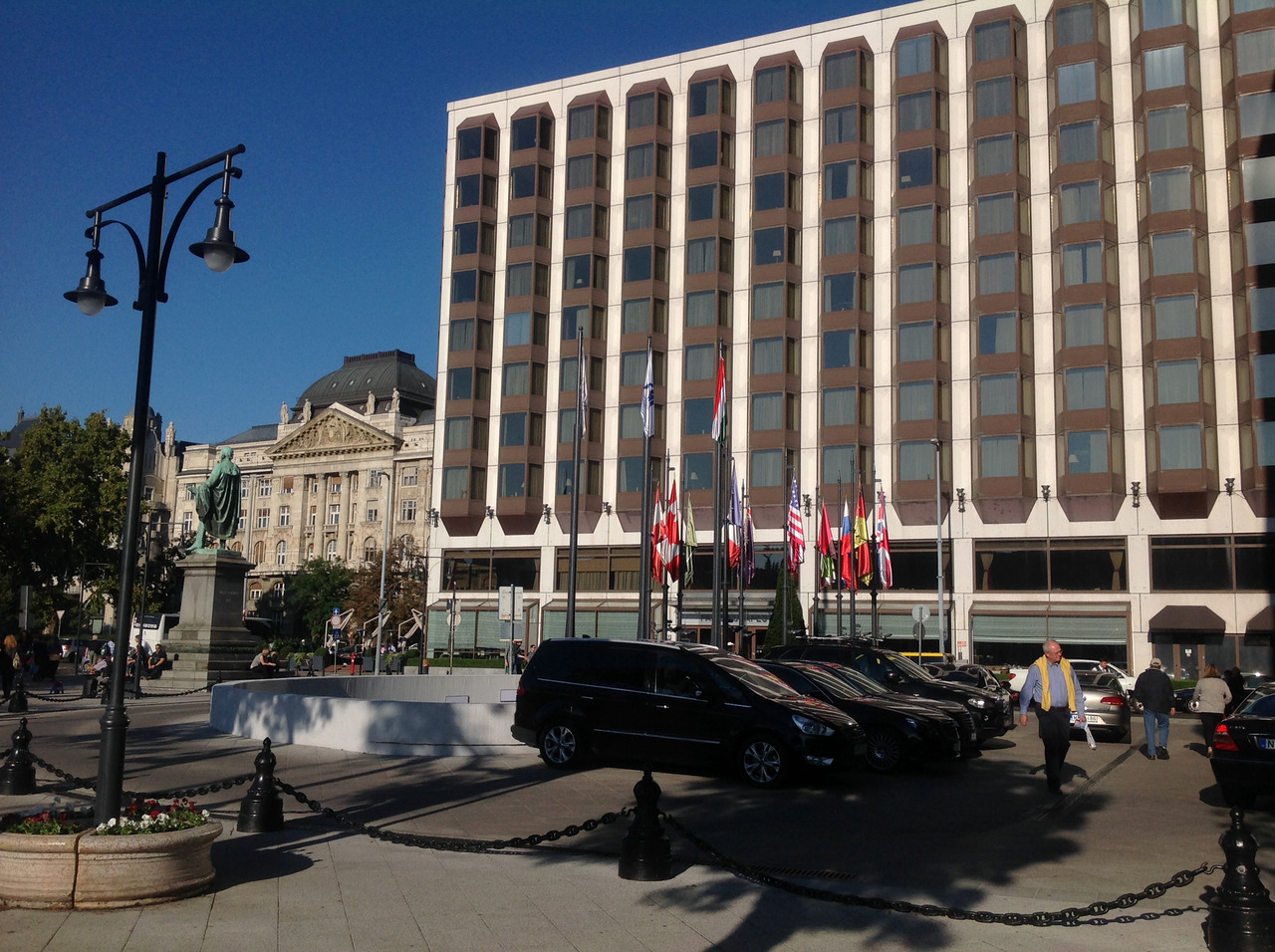
Eötvös József báró szobra
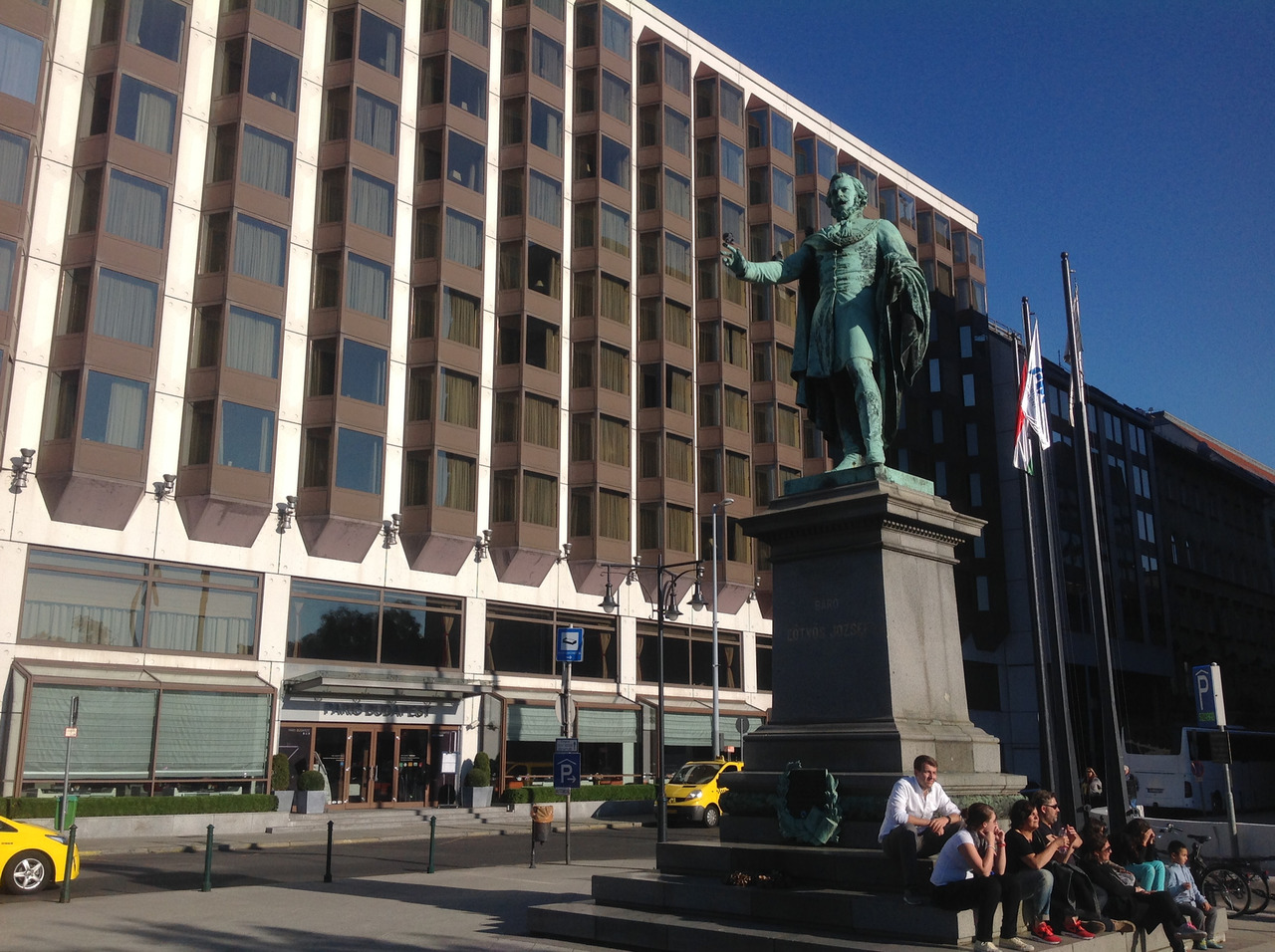
On the square in front of the hotel there is a monument to Josef Etveos — a Hungarian writer and austrian-political figure of the XIX century.
MINISTRY OF INTERNAL AFFAIRS OF HUNGARY

In the old palace, built in classical style, is the building of the Ministry of Internal Affairs of Hungary.
IKARUS
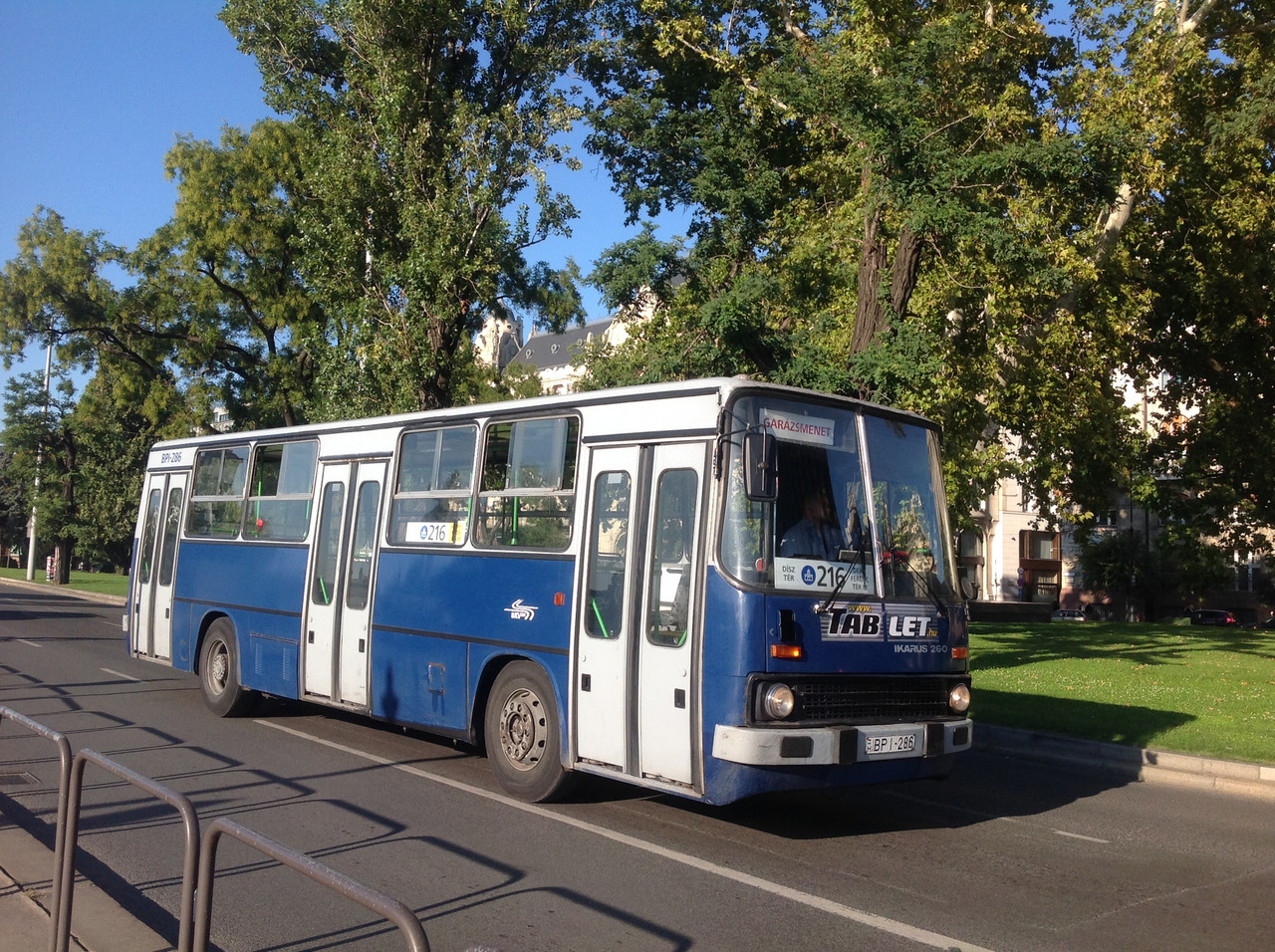
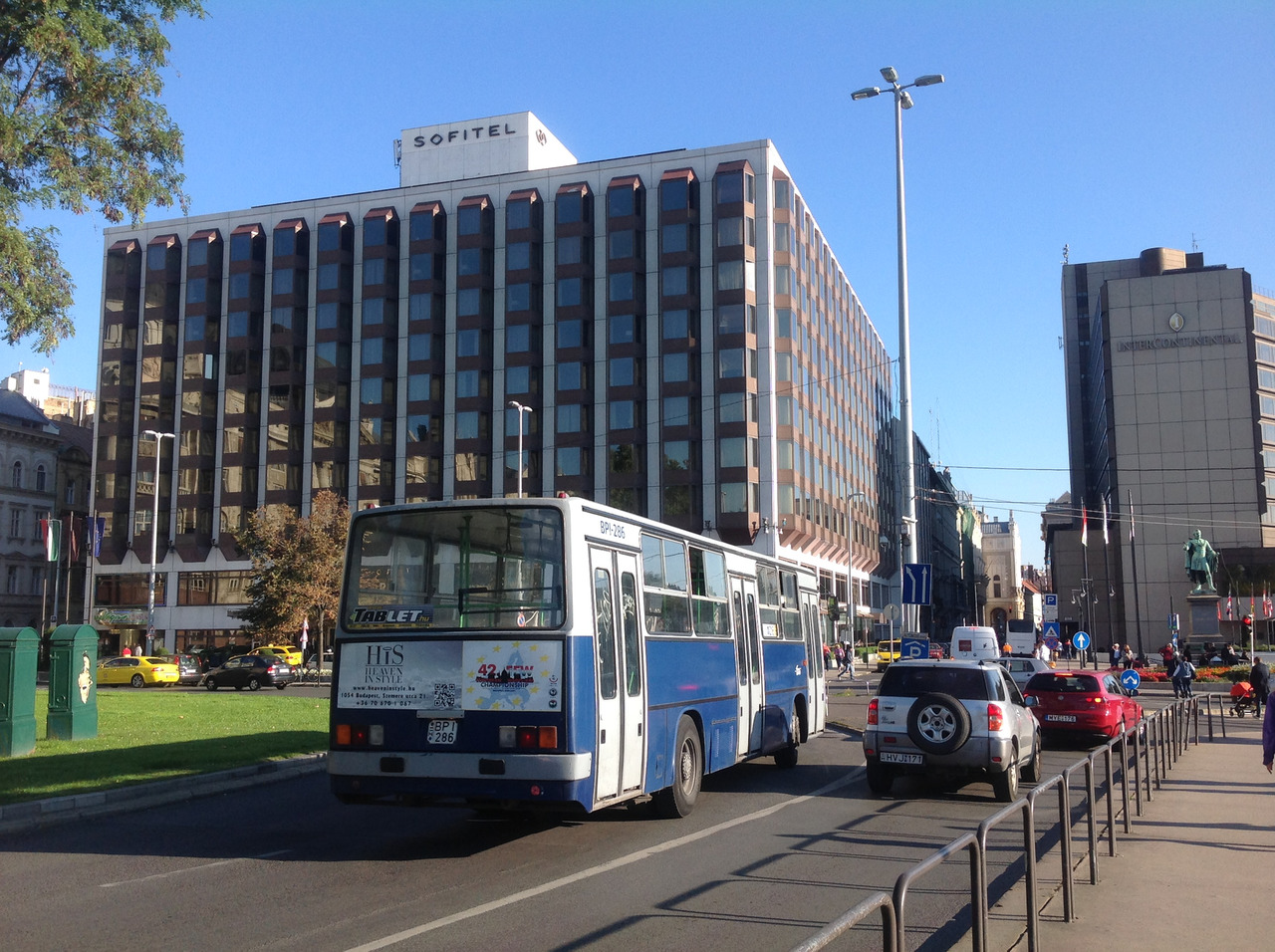
The story of Hungary is impossible without a story about one of the brands of this country, which we have known since Soviet times — the famous Icarus buses.
The Ikarus automobile company was established in this country in 1896, and in the 1970s-1980s, became the largest in Europe. In total, about 150,000 buses were delivered to our country in dozens of different modifications. The name of the bus comes from the name of the character of Greek mythology Icarus.
In Hungary these buses, both old and new, you will see a lot.
ACADEMY OF SCIENCES OF HUNGARY
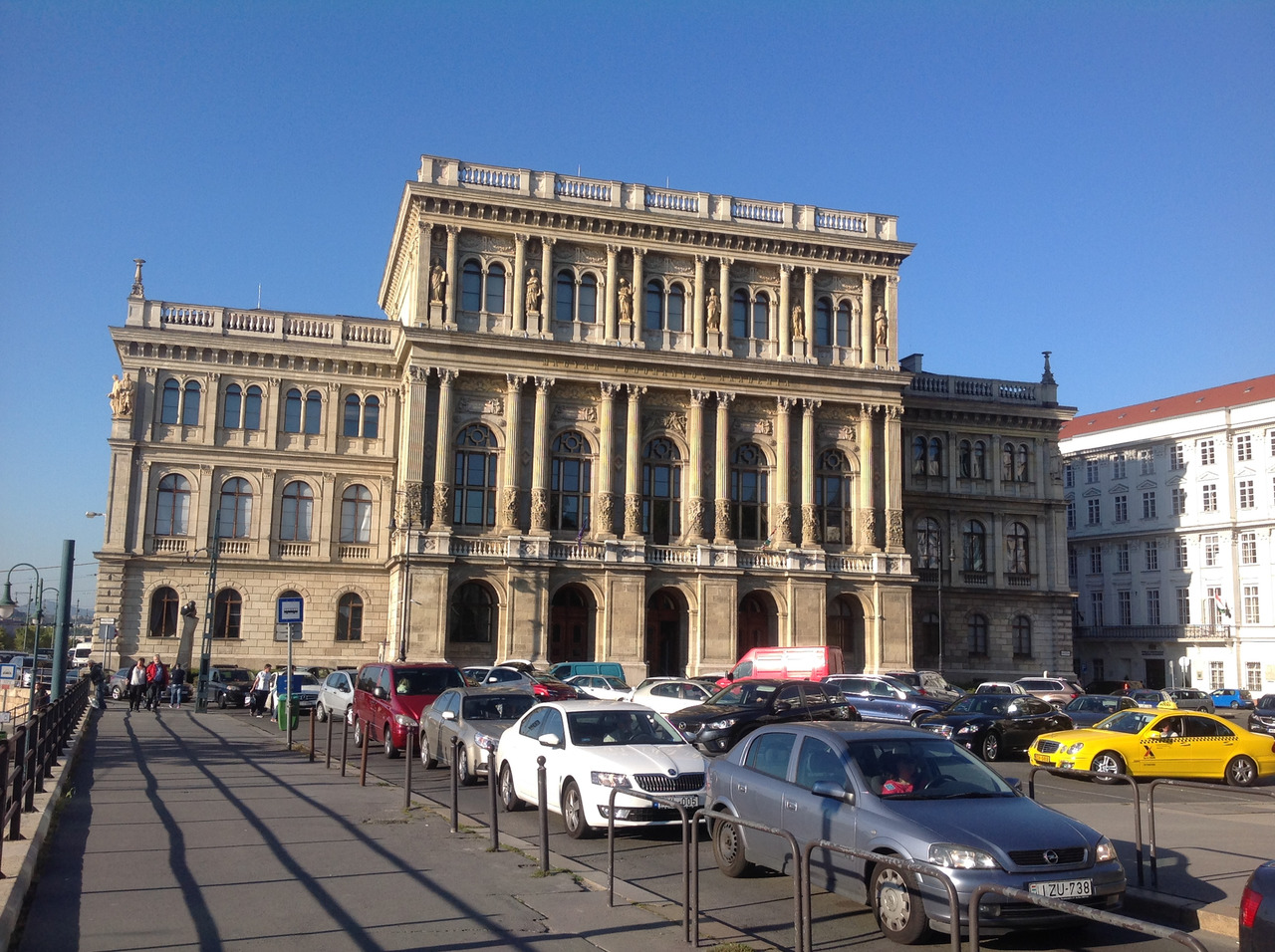
On the other side of the Széchenyi Park there is a magnificent facade of the building of the Hungarian Academy of Sciences.
This building was built in the Neo-Renaissance style in the middle of the XIX century according to the project of the Prussian architect Friedrich Stuyler, who had a great influence on the historical appearance of Berlin.
DANUBE
Between the banks of Buda and Pest the great Danube is poured into the sun, the second largest river in Europe after the Volga River. The length of 2860 km.
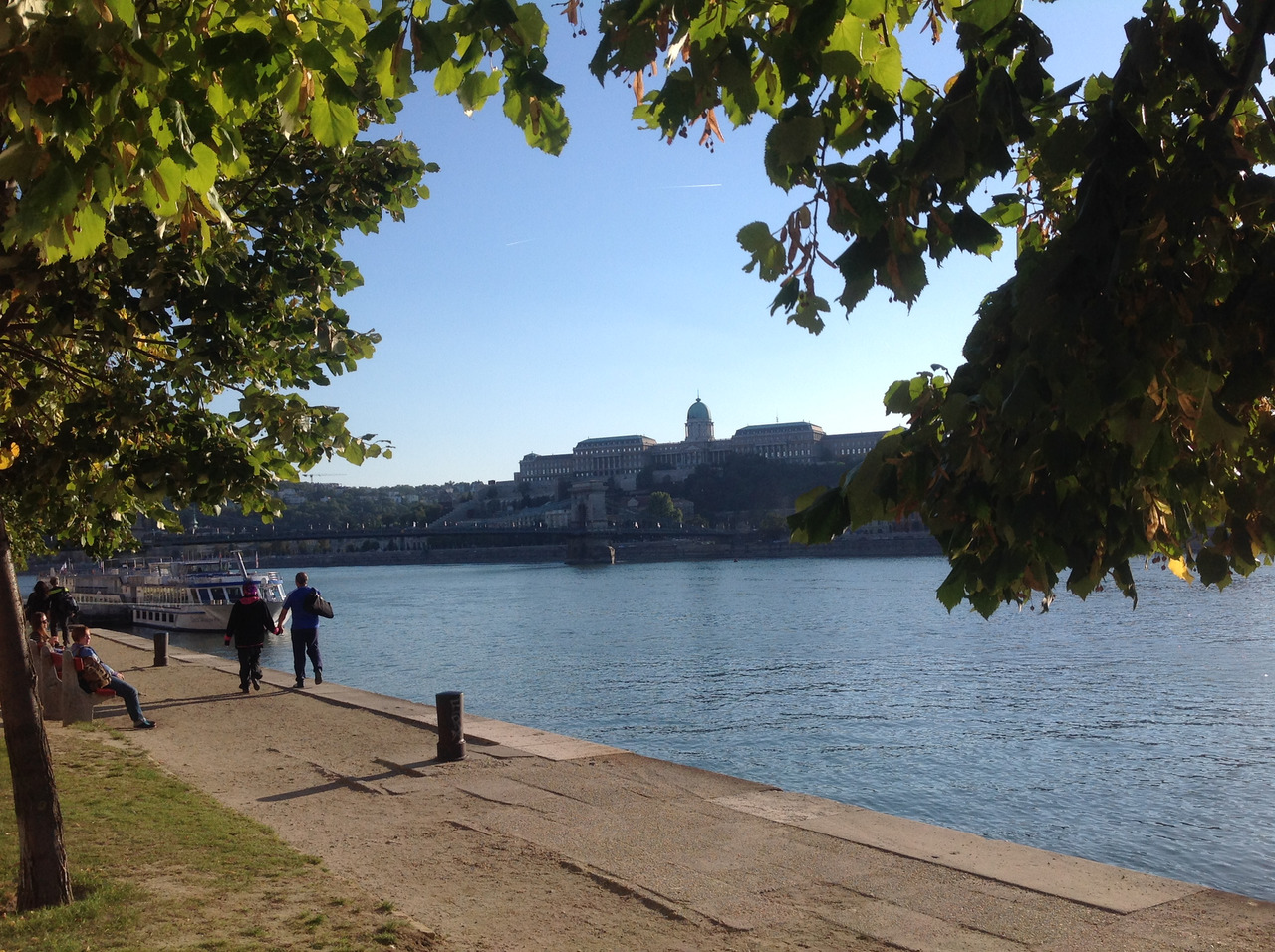

At the time when I was standing by the embankment, past me and dozens of other tourists a steamboat sailed with a youth holiday on board. It was like graduating students or schoolchildren who stormily marked on the deck something in elegant costumes.
Immediately, on the beach after a stormy get-together, which often happens in Budapest and attracts young people from all over the European Union, students rest.
For many tourists, they also became a local attraction.
Shoes on the Danube Bank
Cipők a Duna-parton. This is a symbolic memorial in memory of the victims of the Holocaust, established in Budapest in 2005.
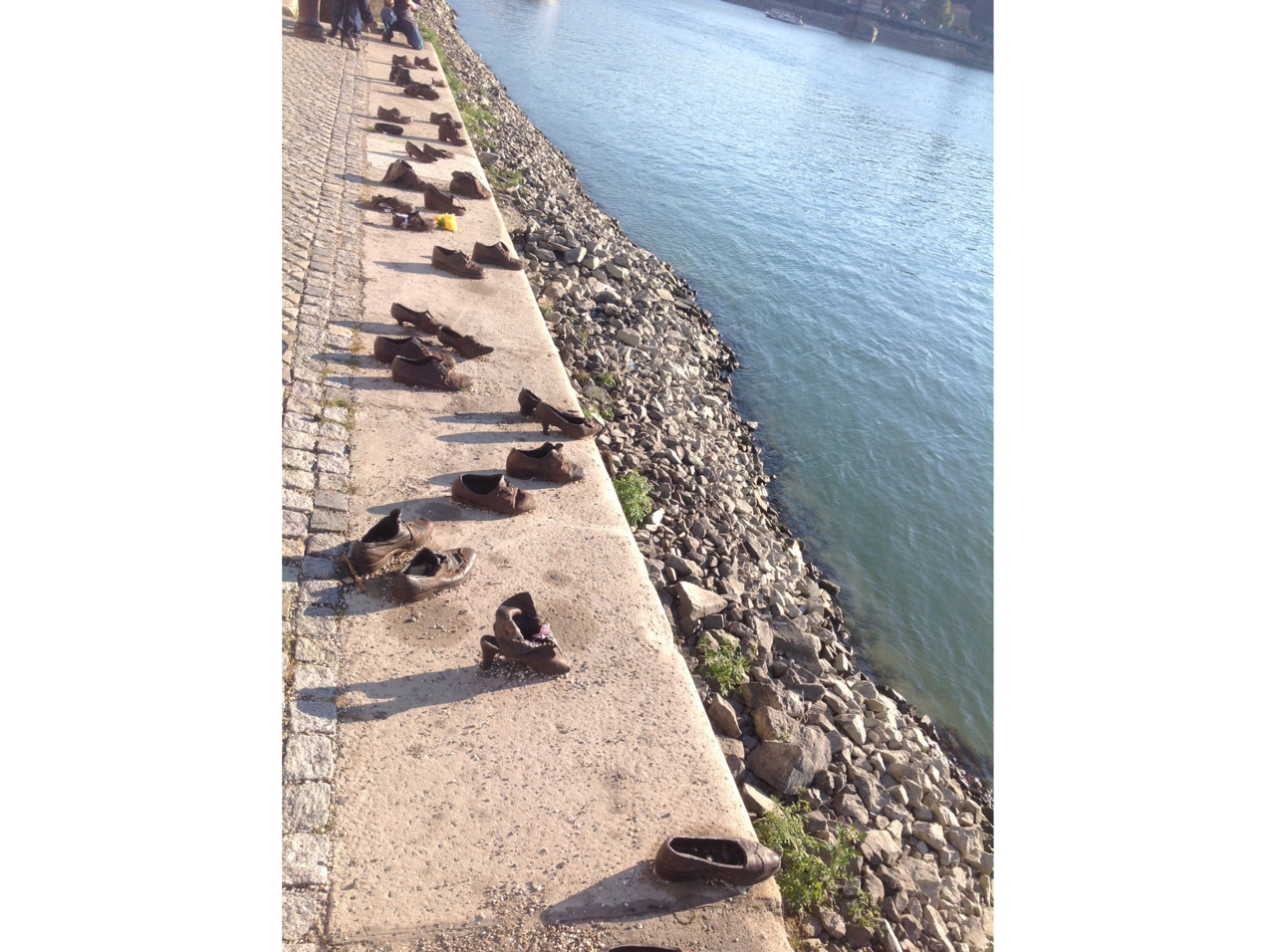
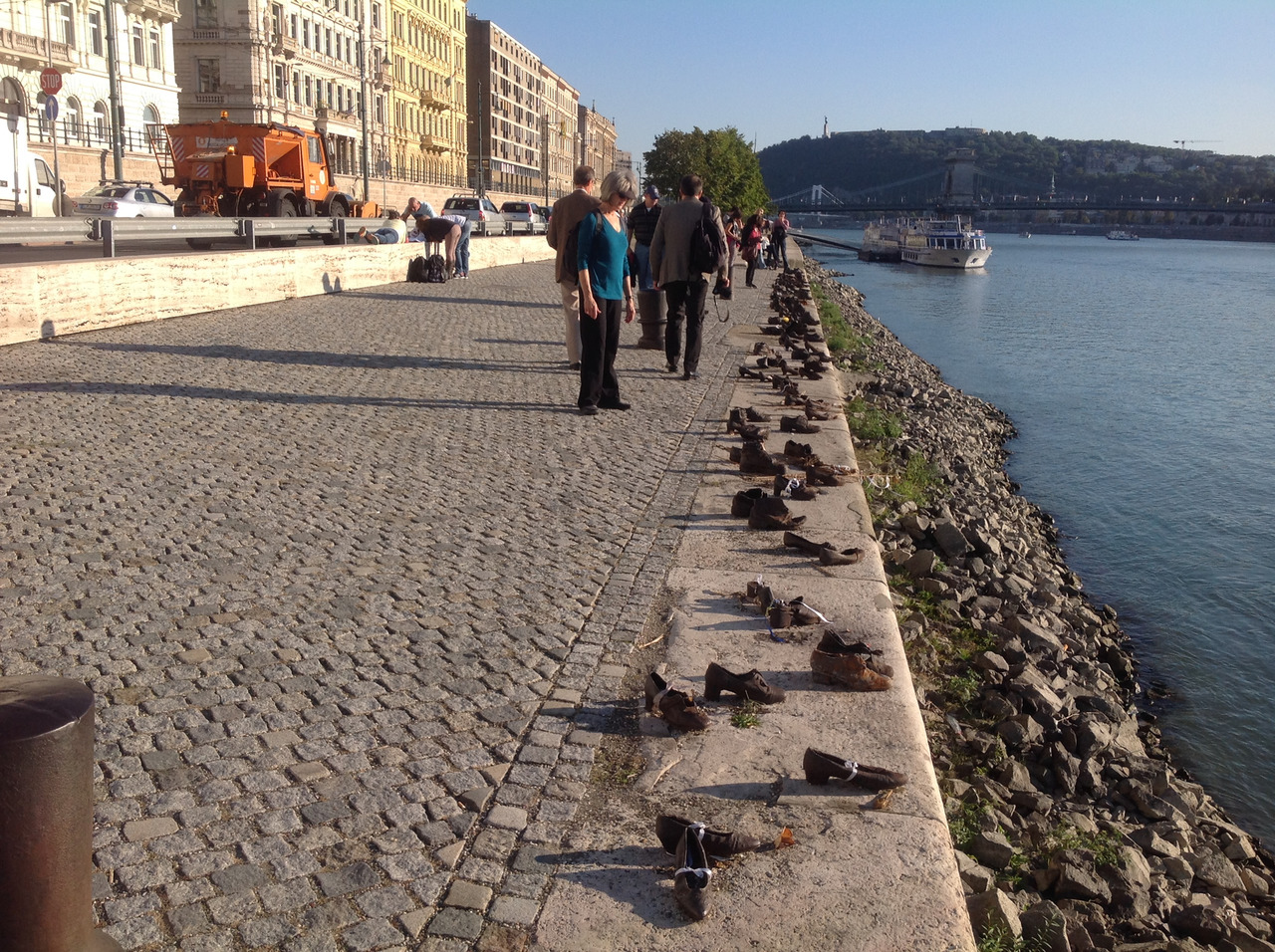
During the Second World War, the Nazis brought Jews to this place, forced to remove their shoes, and then fettered a chain of 50—60 people lined up in a column, and fired at the first, who, falling into the water, pulled the rest of the people behind him.
Shoes were then sold by Nazi soldiers in the market or simply stayed with them.
The memorial is of tremendous symbolic significance, since it shows how the fates of thousands of people here on the Danube bank were cut off.
Kossuth Lajos tér
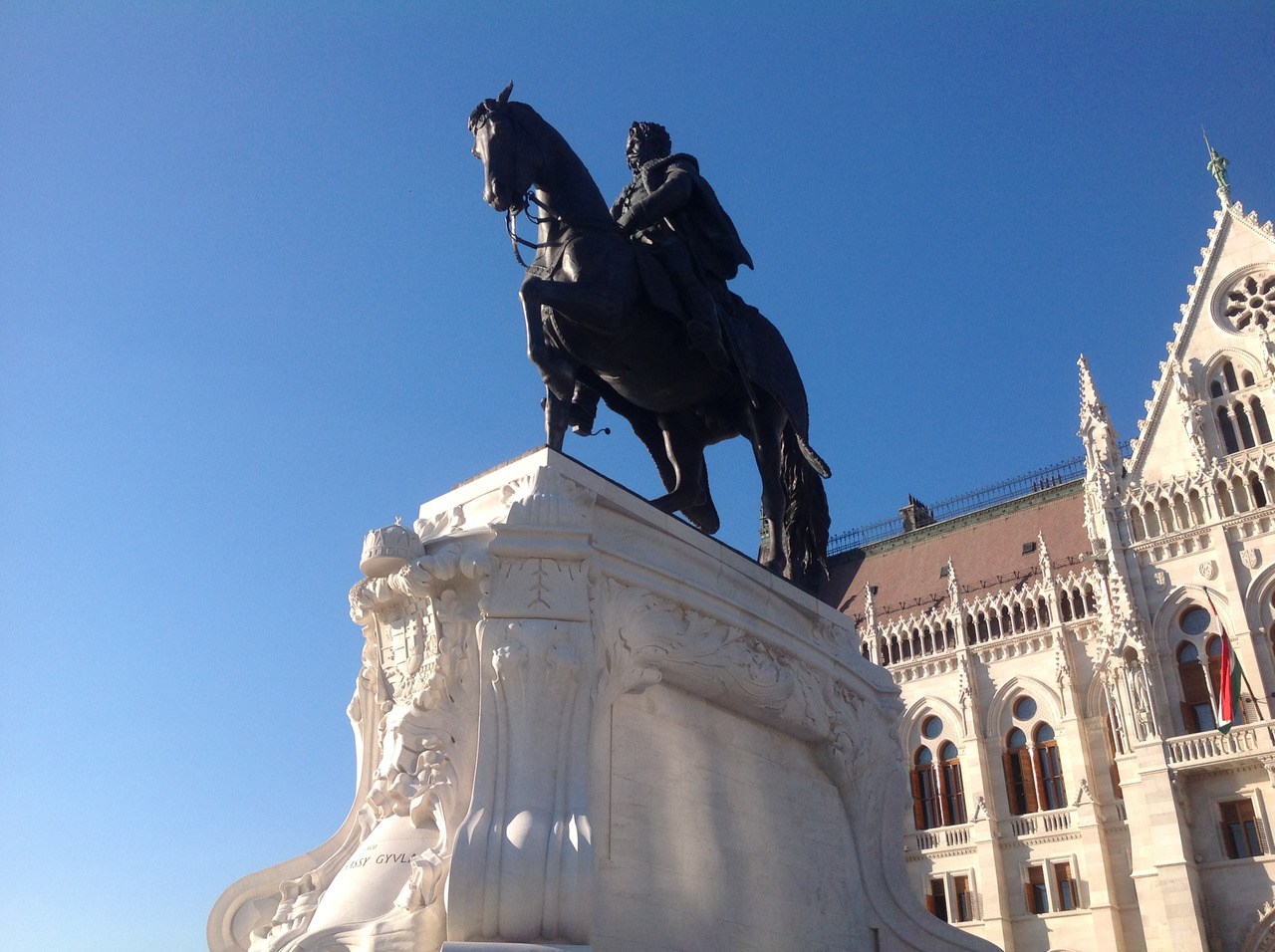
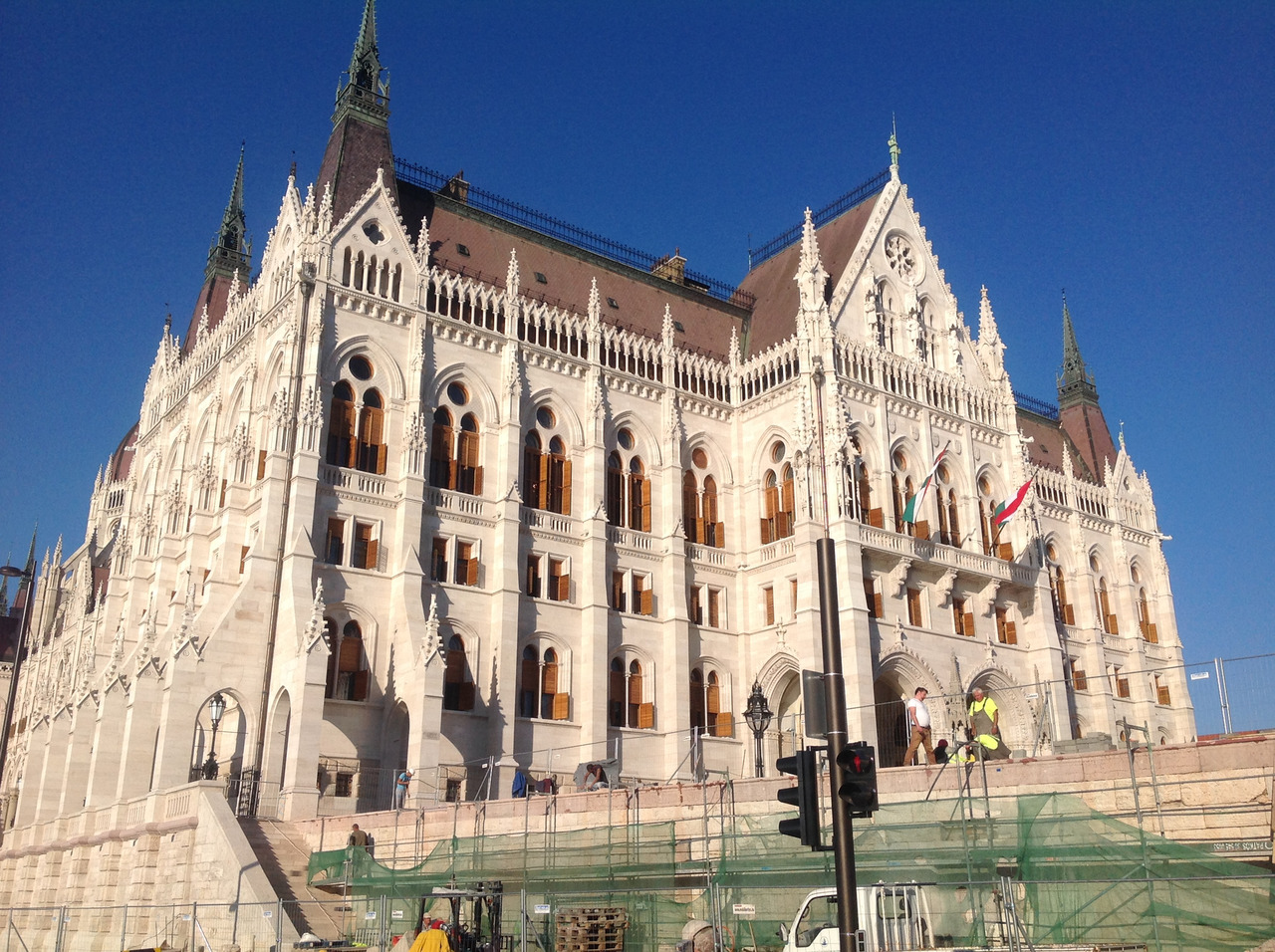
The brightest sight of Budapest, the building of the Parliament, precedes the area of Lajos Kossuth with its equestrian monument.
This is a revered in the country political and public figure, who was prime minister and ruler-president during the Hungarian revolution of 1848—1849.
THE BUILDING OF THE HUNGARIAN PARLIAMENT
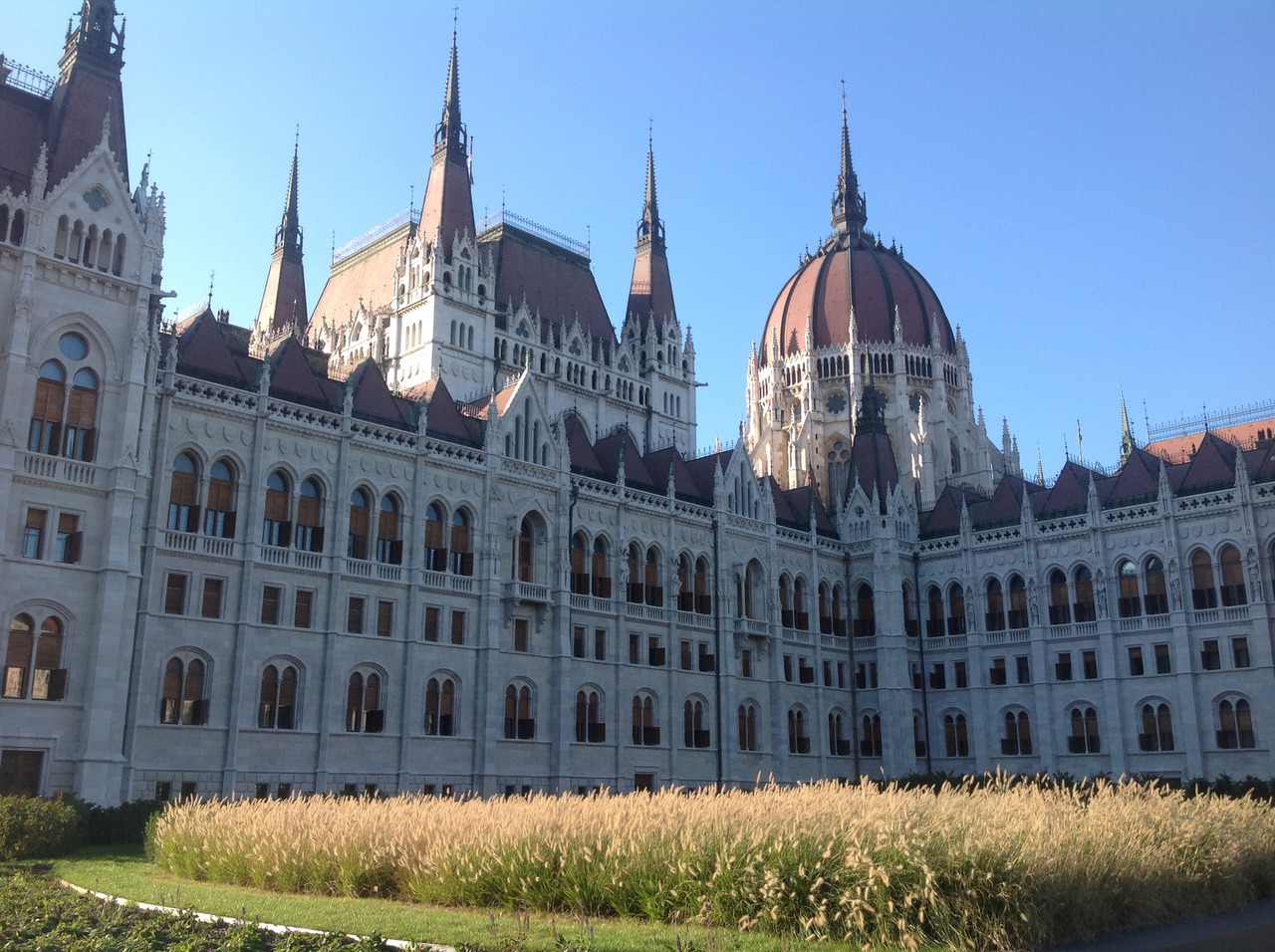
The architectural dominant of the city is the magnificent building, which is now the seat of the Hungarian parliament. Built in the Neo-Gothic style after the model of the Palace of Westminster, this building has long become a visiting card not only of the capital, but of the whole of Hungary.
The idea of creating such a large-scale complex was born in 1873 after the unification of two different cities — Buda and Pest. The competition was won by the Hungarian architect Imre Steindl.
On both sides, the parliament is decorated with the prospect of historical bridges across the Danube — the Sechinya Bridge and Margaret Bridge.
FACADE OF THE PARLIAMENT BUILDING
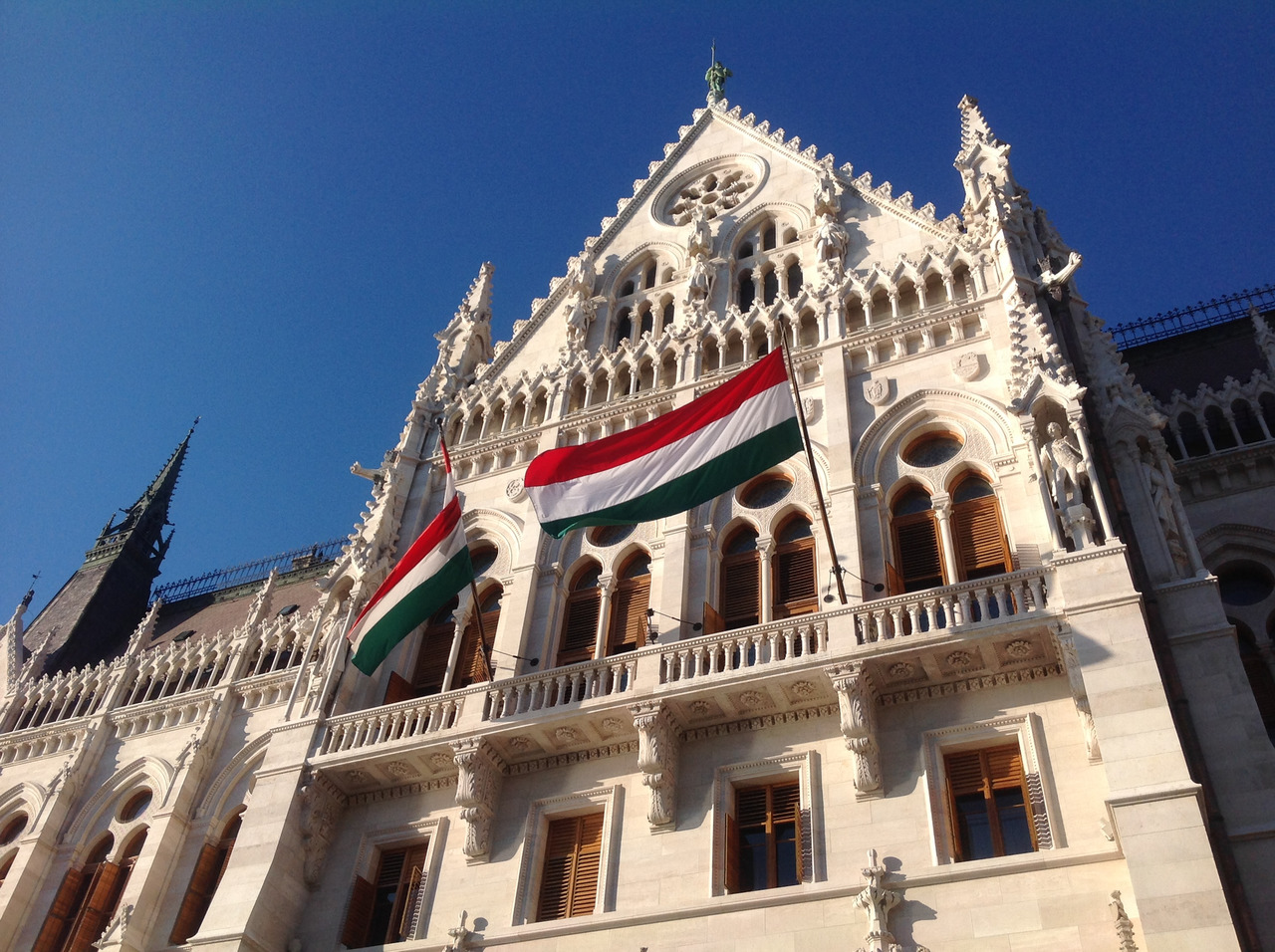
In order to evaluate the idea of the author of the project, I advise you to bypass the building around and consider in detail small details and architectural elements. The fact is that the facade of the building along the perimeter is decorated with statues of the rulers of Hungary and Transylvania.
The height of the central dome is 27 meters, and the halls of the two houses of parliament are located to the left and to the right of it (currently there is a unicameral parliament in Hungary). Inside there are almost 700 different rooms and halls, almost 30 stairs. In order to appreciate the beauty of interior interiors, I recommend to go inside.
MINISTRY OF AGRICULTURE
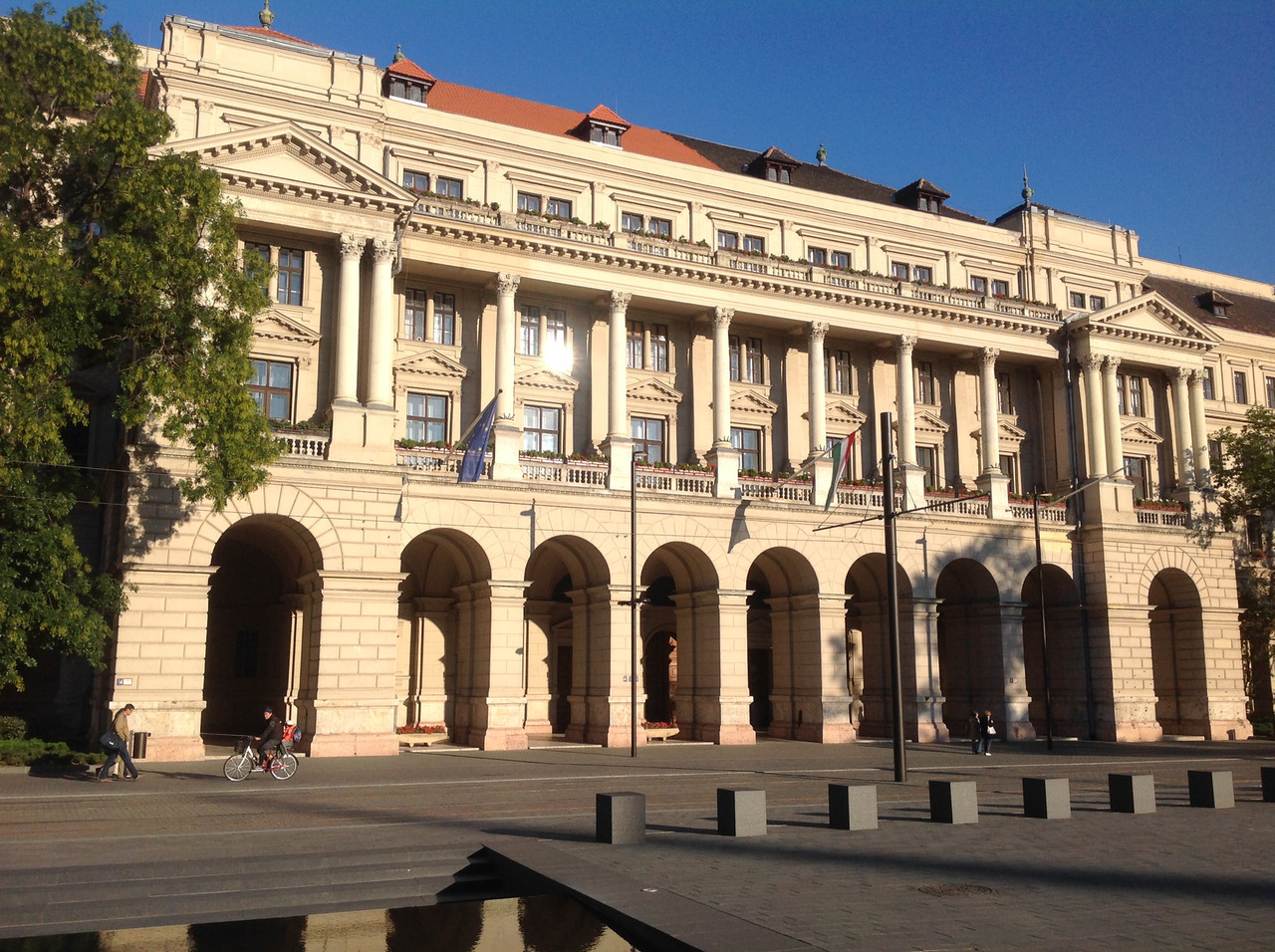
On the opposite side of the facade of the parliament building are two buildings in the classical style — the building of the Ministry of Agriculture and the Ethnographic Museum.
Together they form a complete architectural ensemble.
ETHNOGRAPHICAL MUSEUM
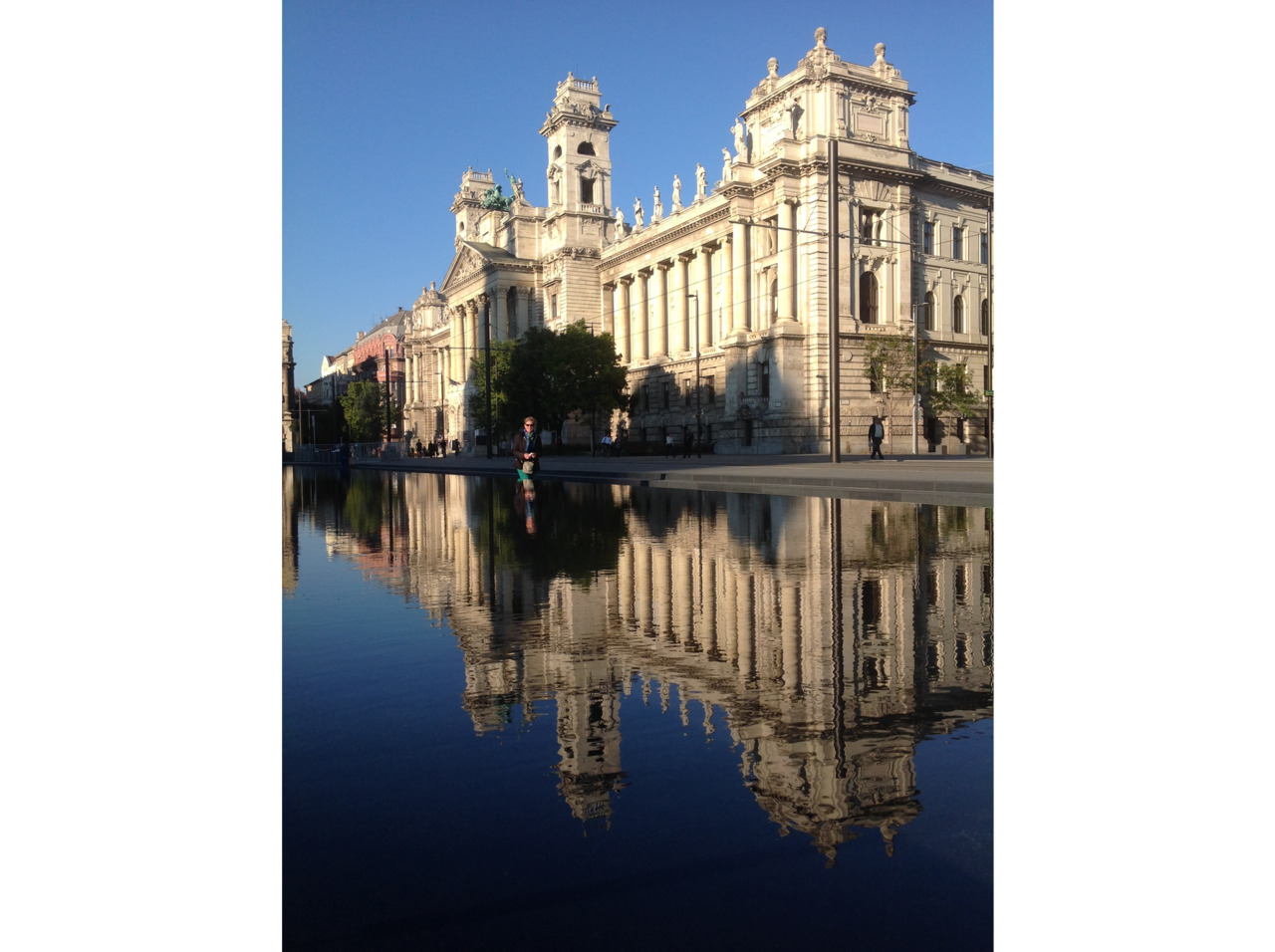
This is one of the largest museums of ethnography in Europe, in the funds of which almost 200 thousand exhibits are kept. Now it occupies the building of the former palace of justice.
Kossuth Monument
The events of the Hungarian revolution of 1848—1849. a monument is also on the square in front of the parliament building. In the center on the pedestal is Lajos Kossuth, surrounded by other revolutionaries and political figures involved in the revolution. The monument was made of white stone.
Бесплатный фрагмент закончился.
Купите книгу, чтобы продолжить чтение.